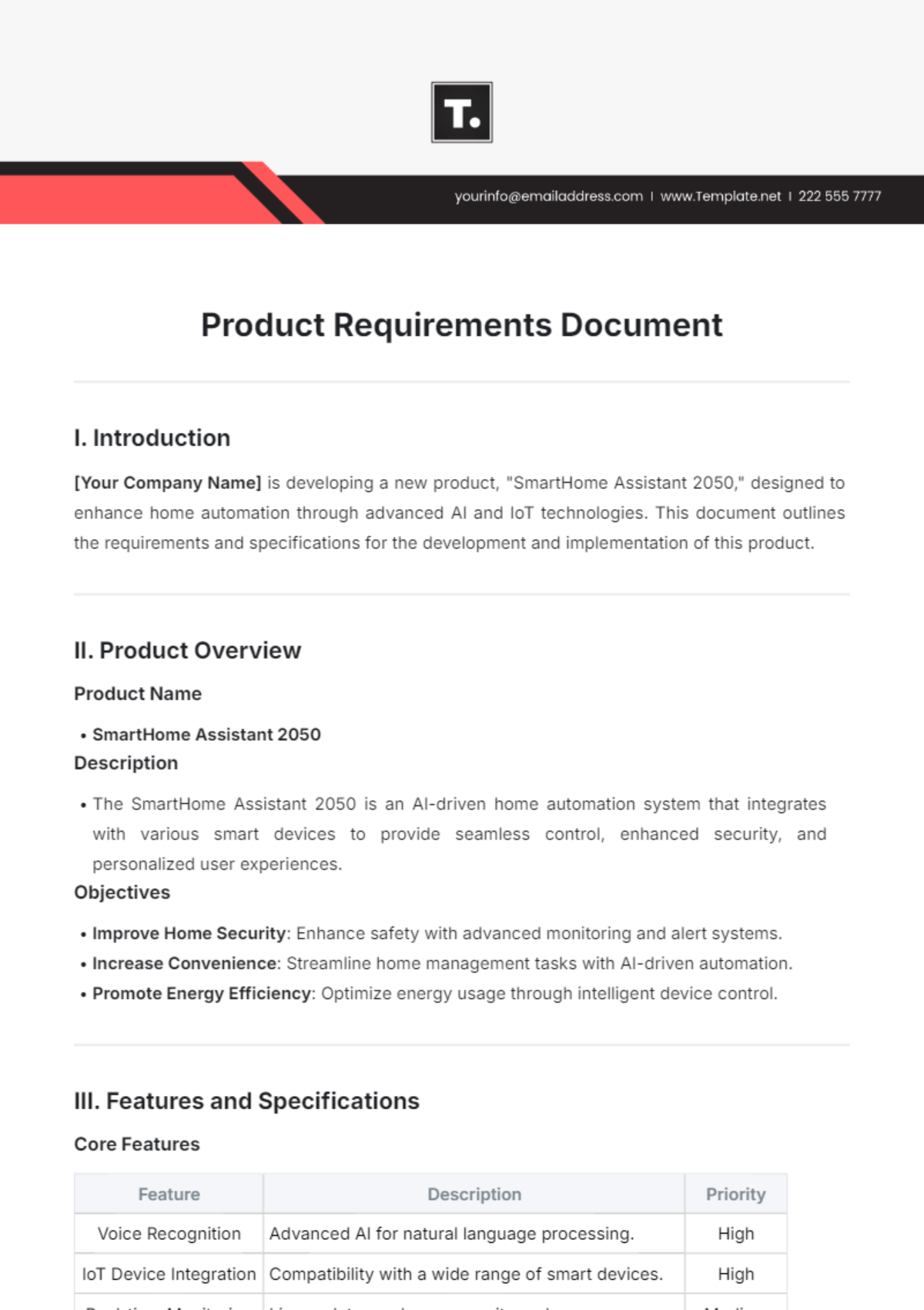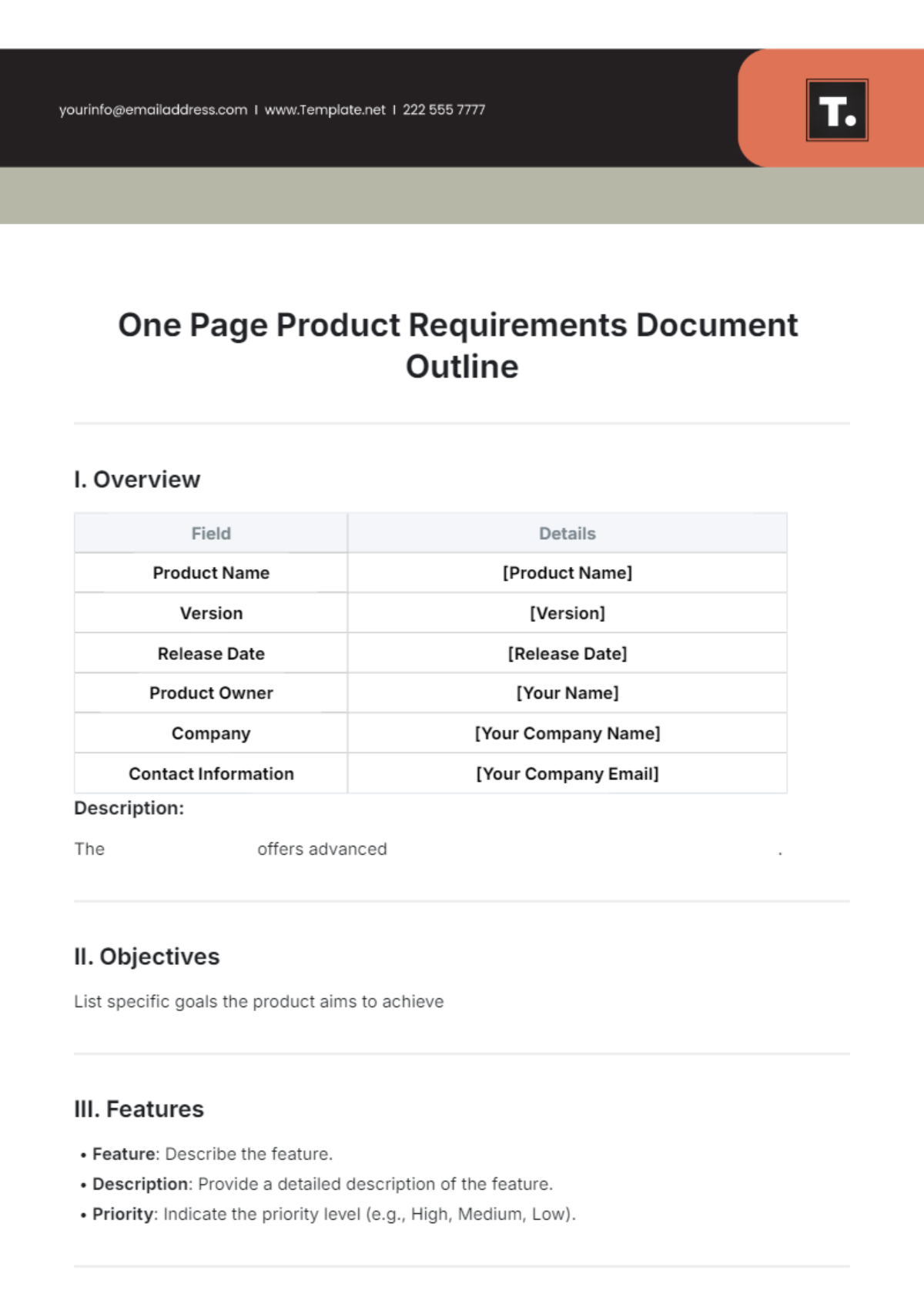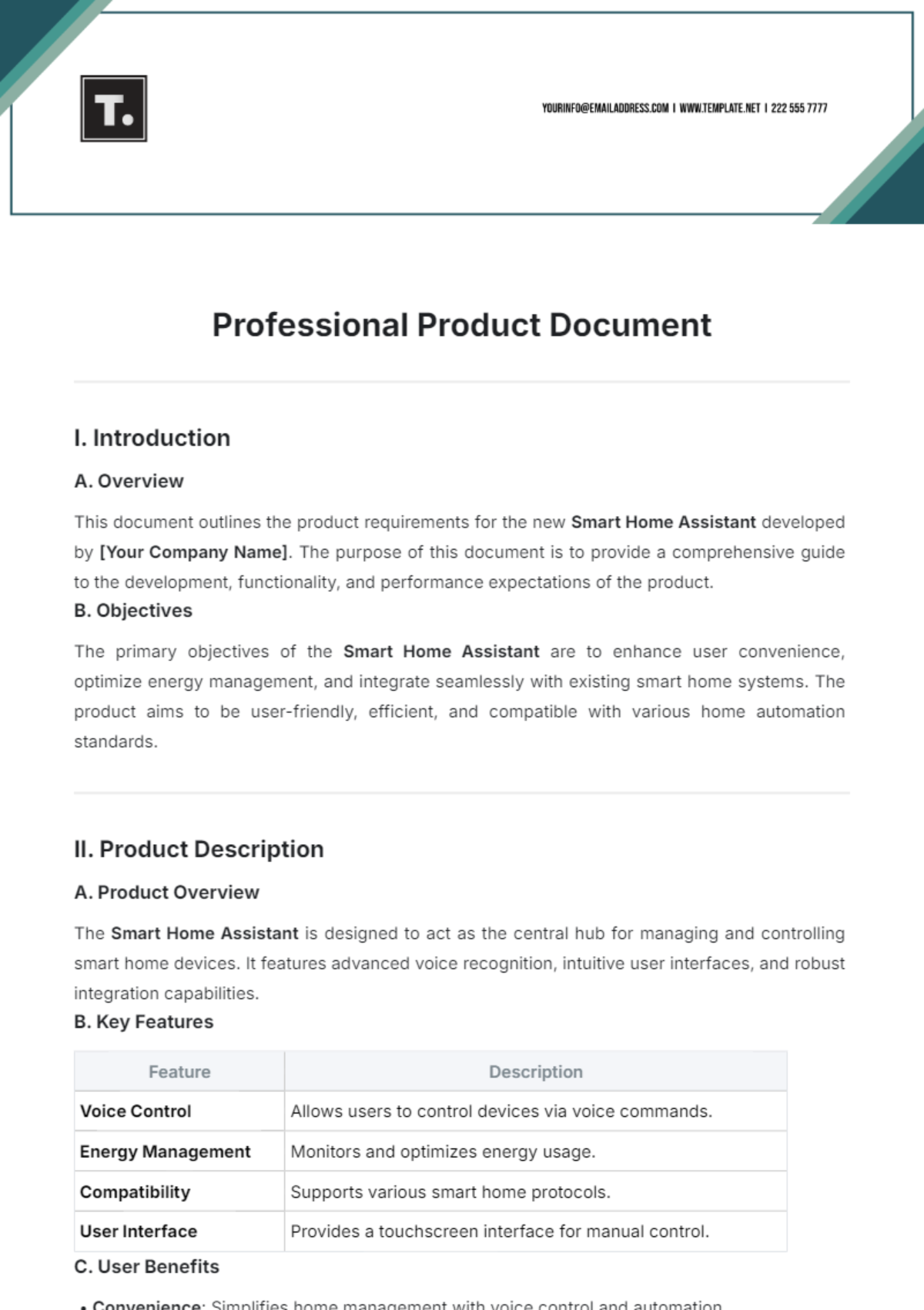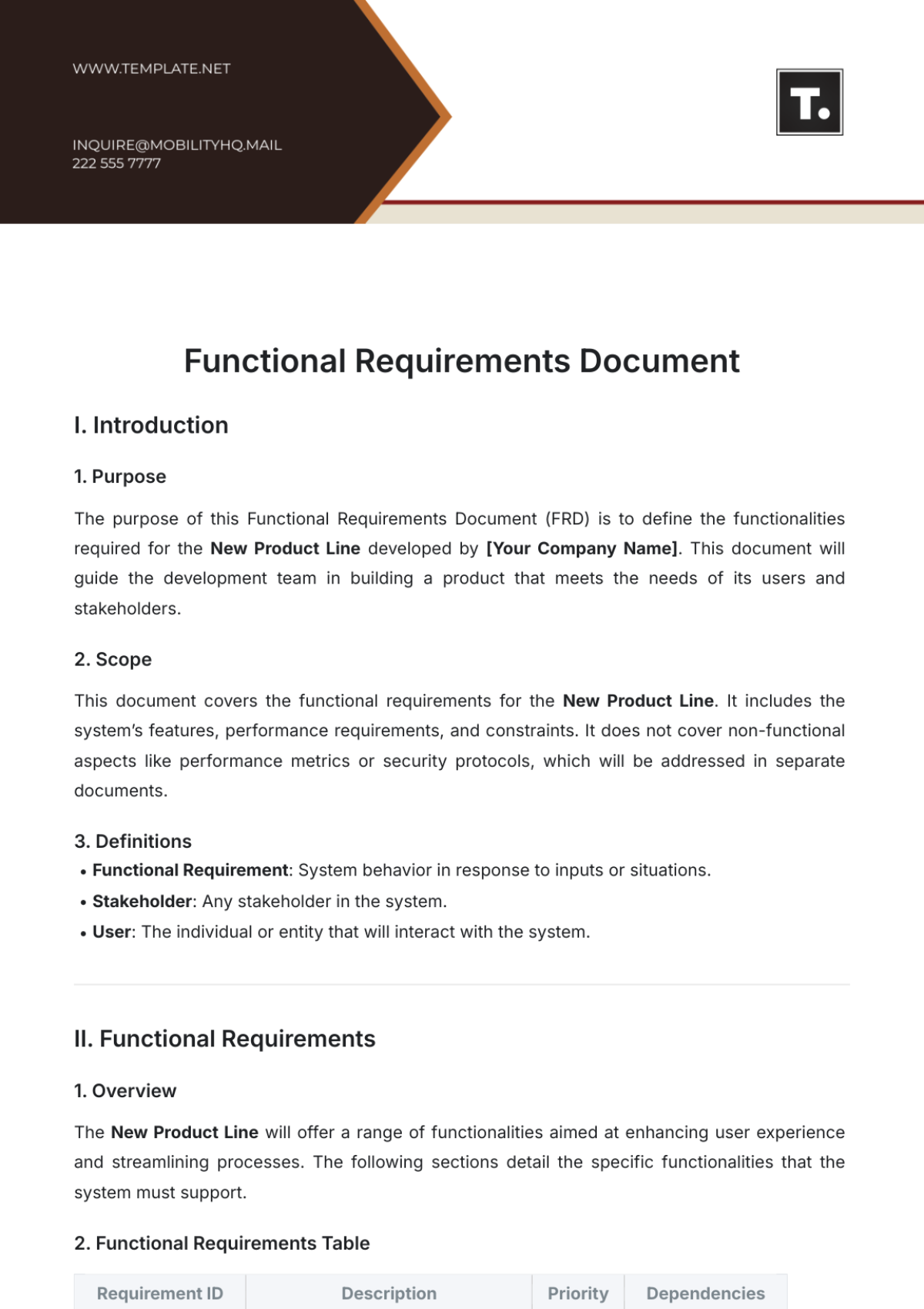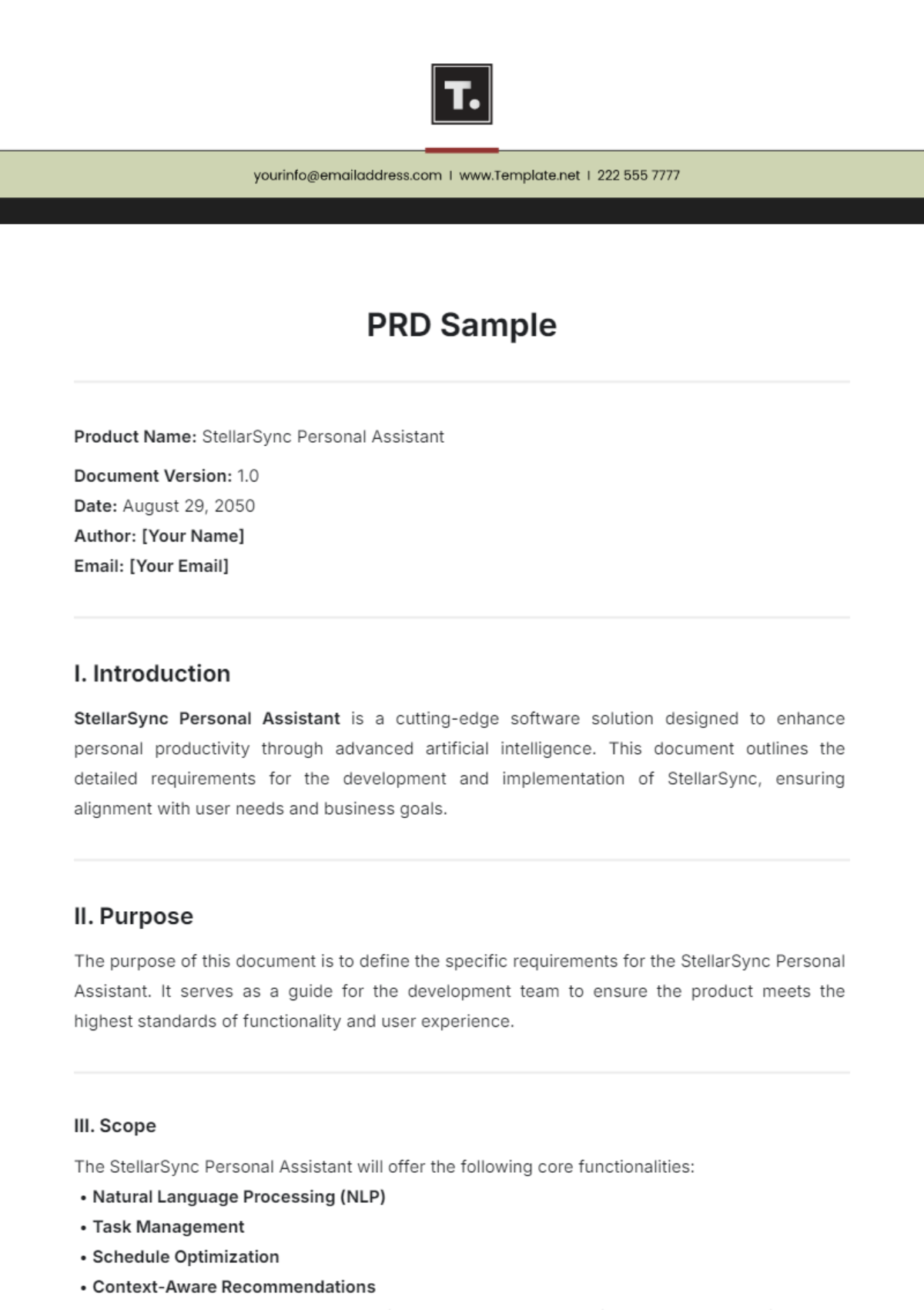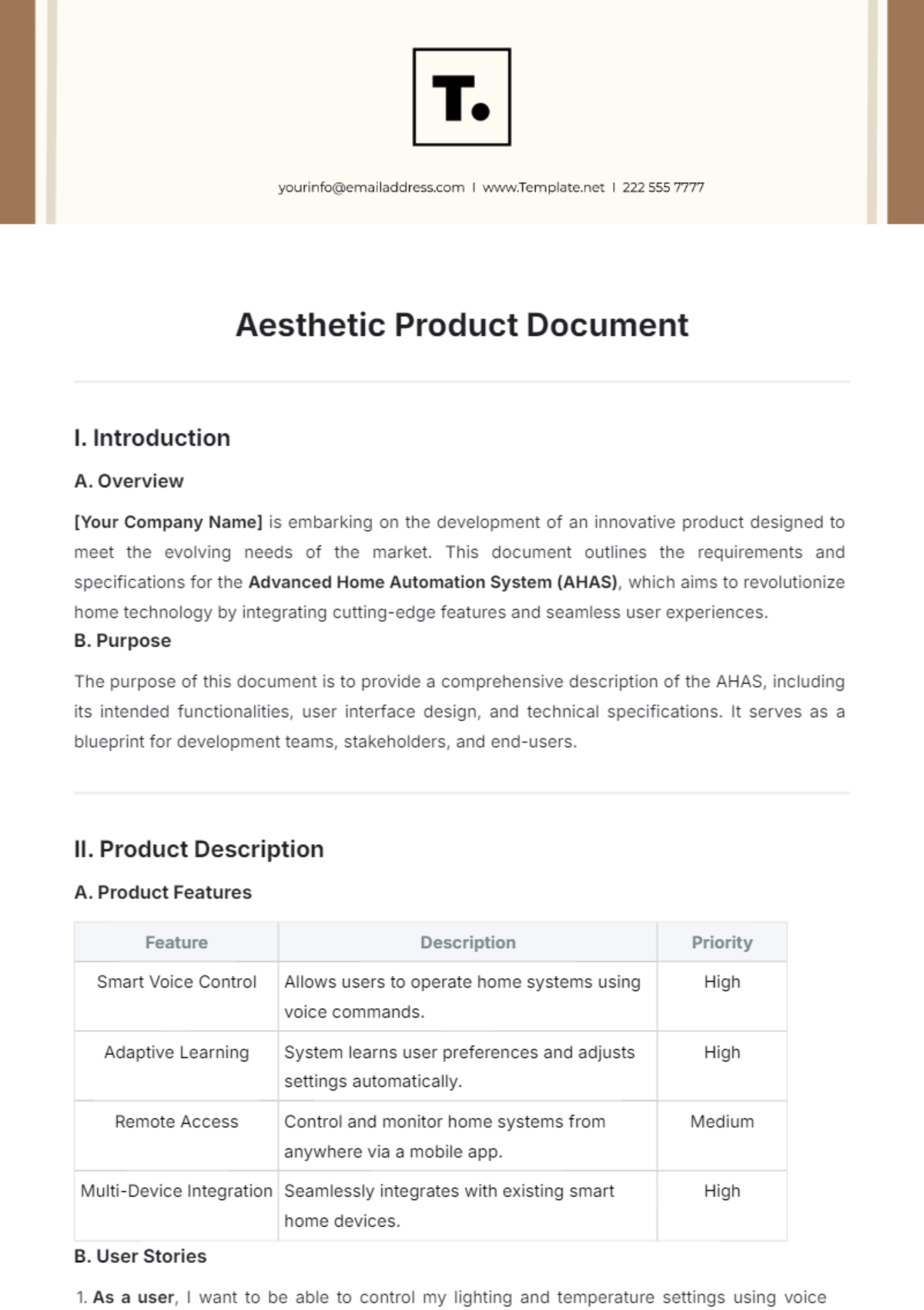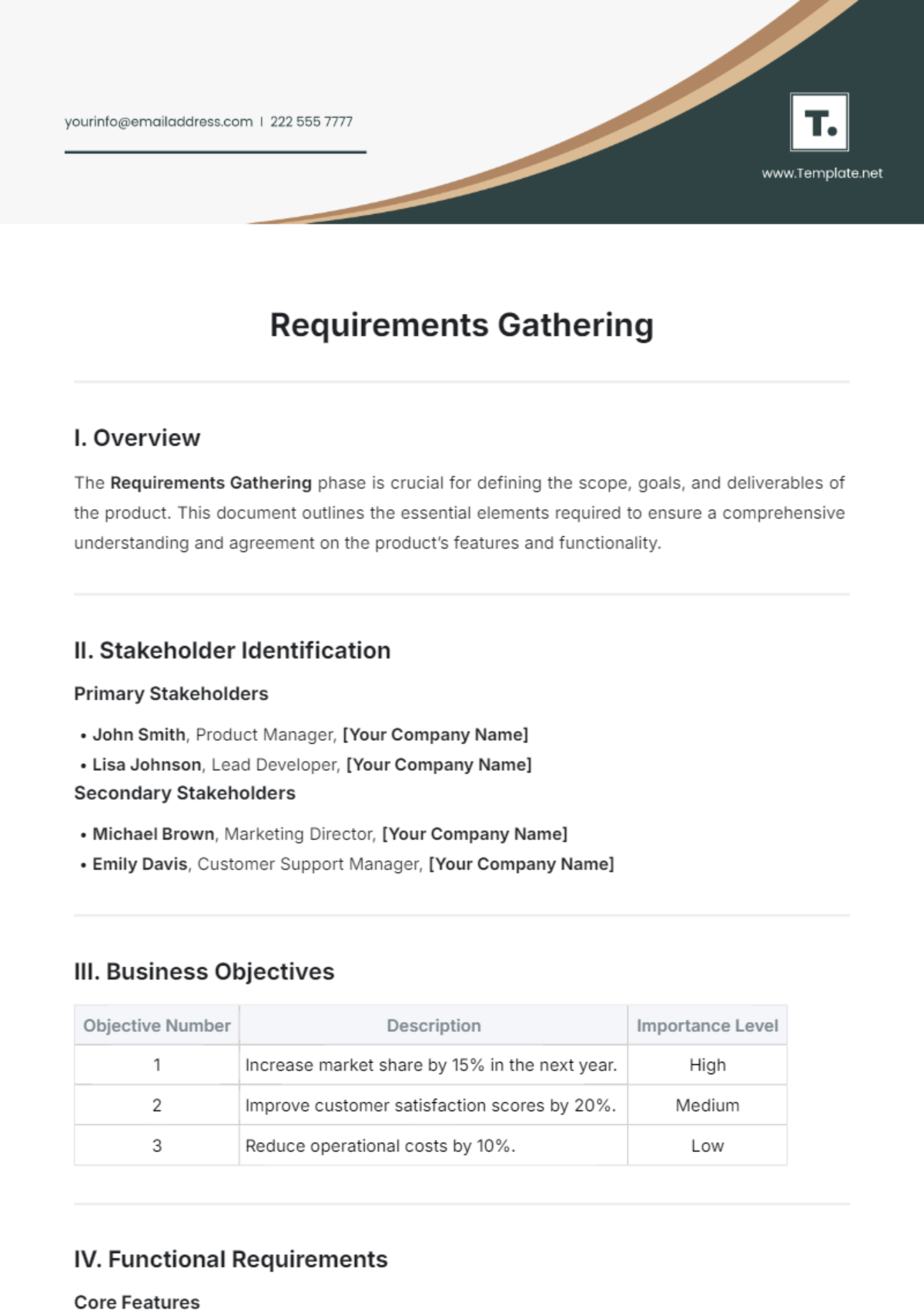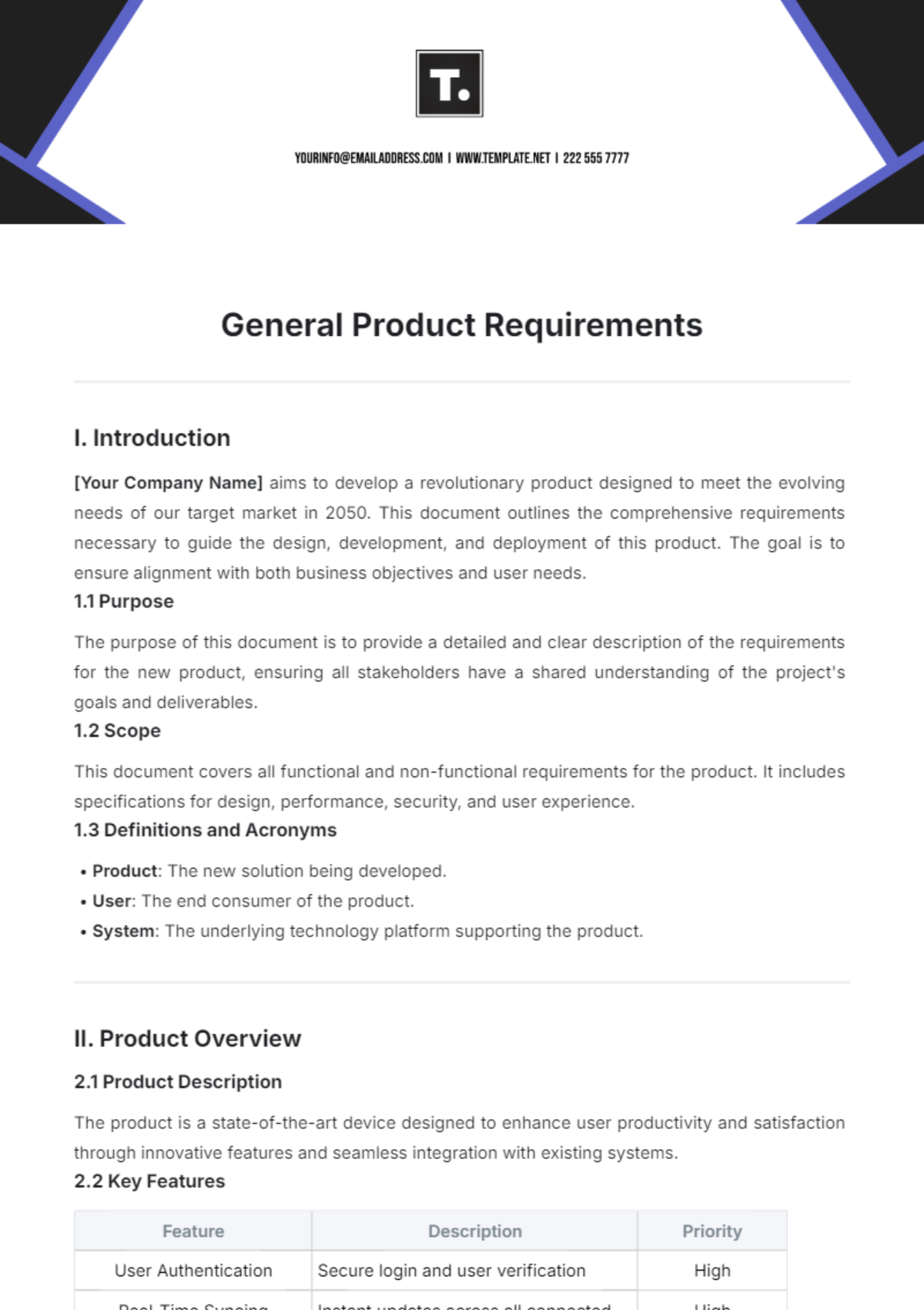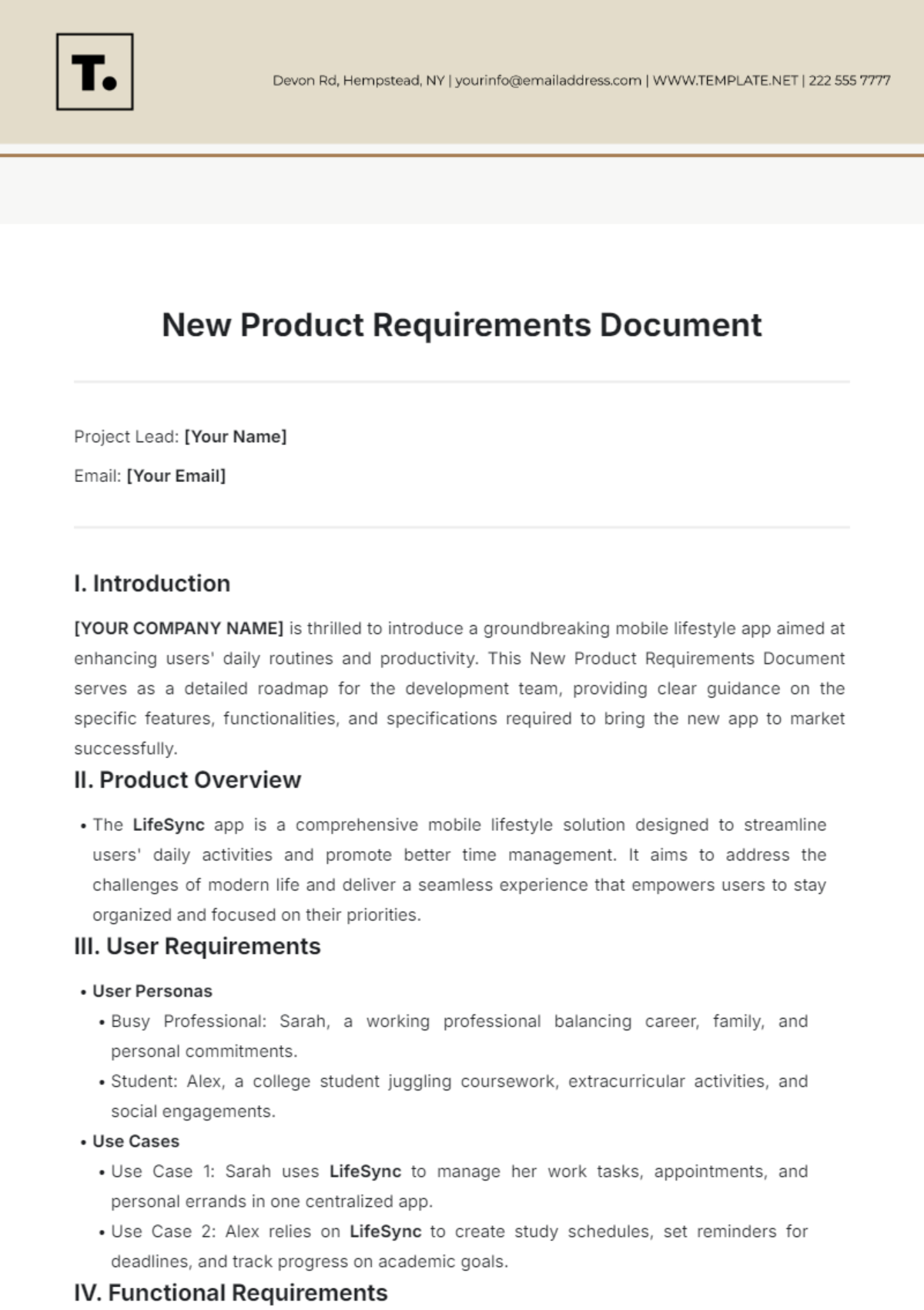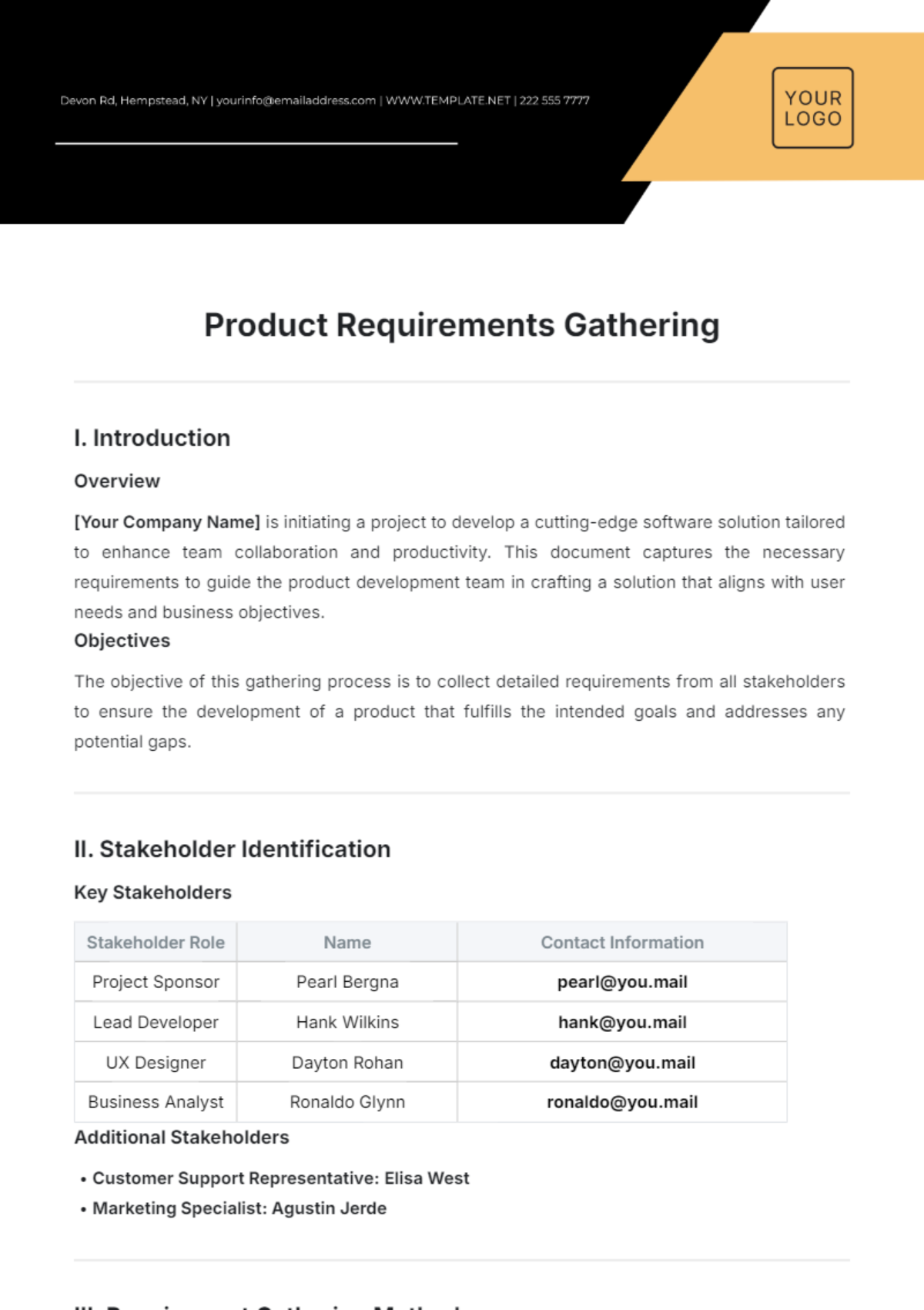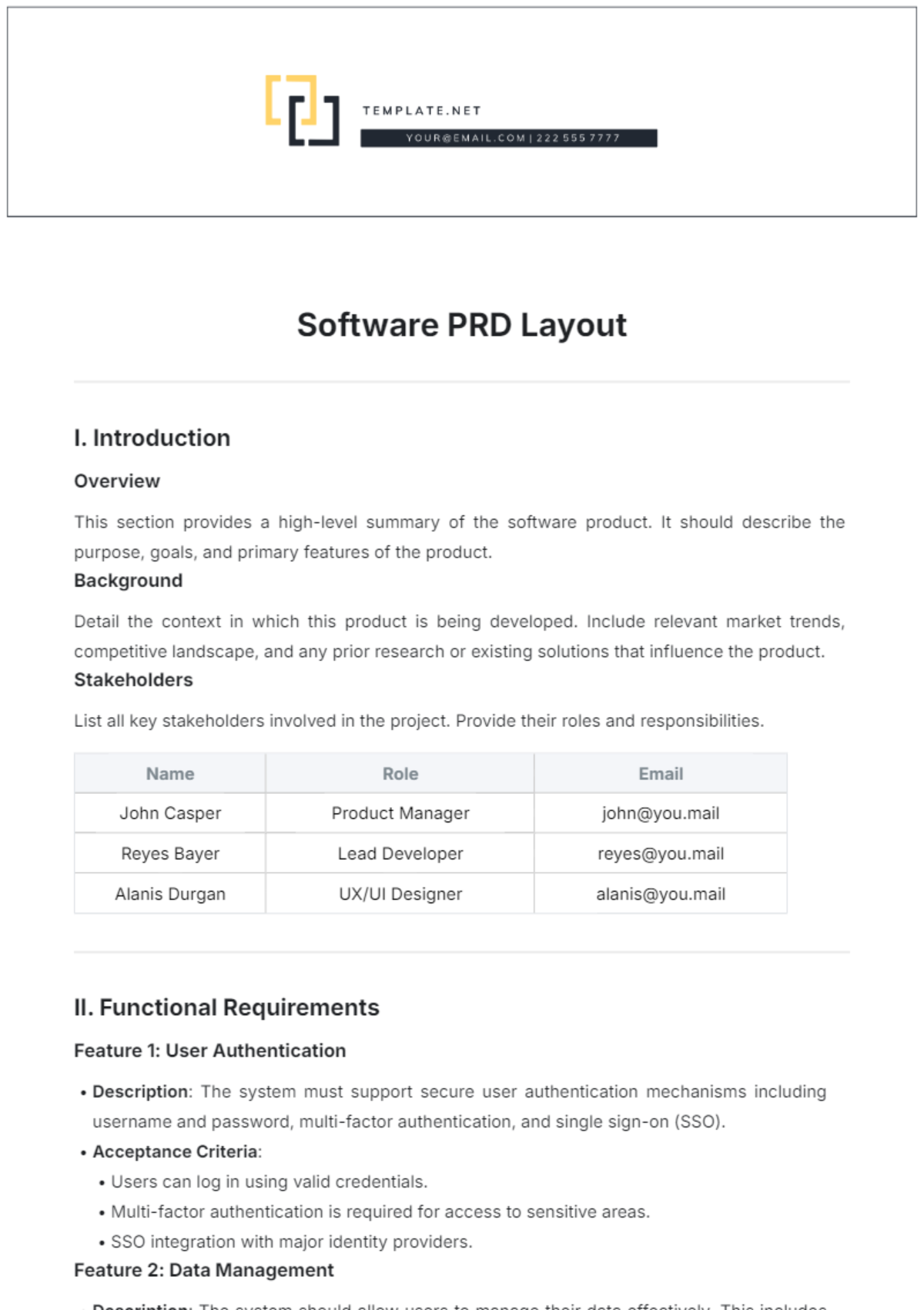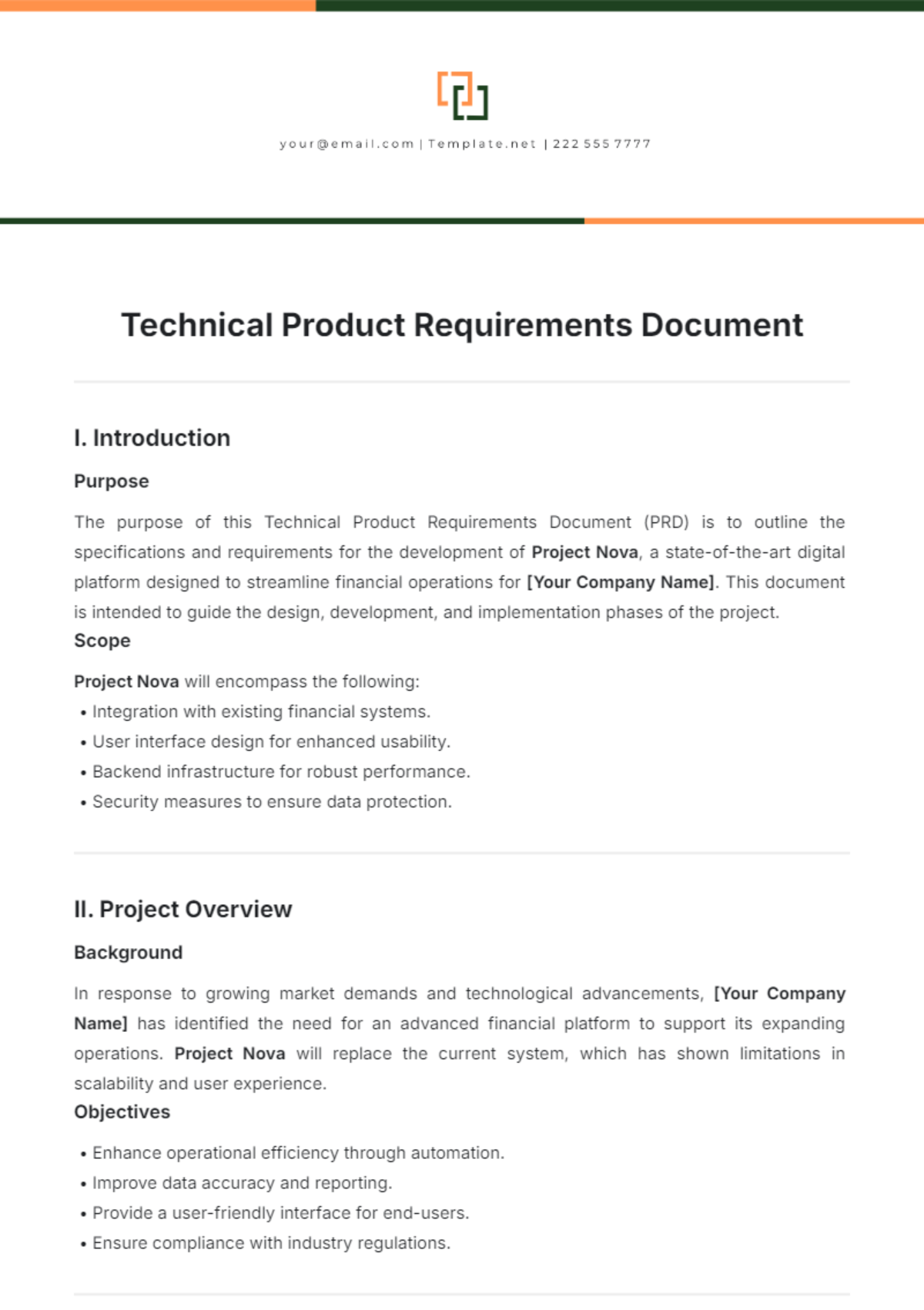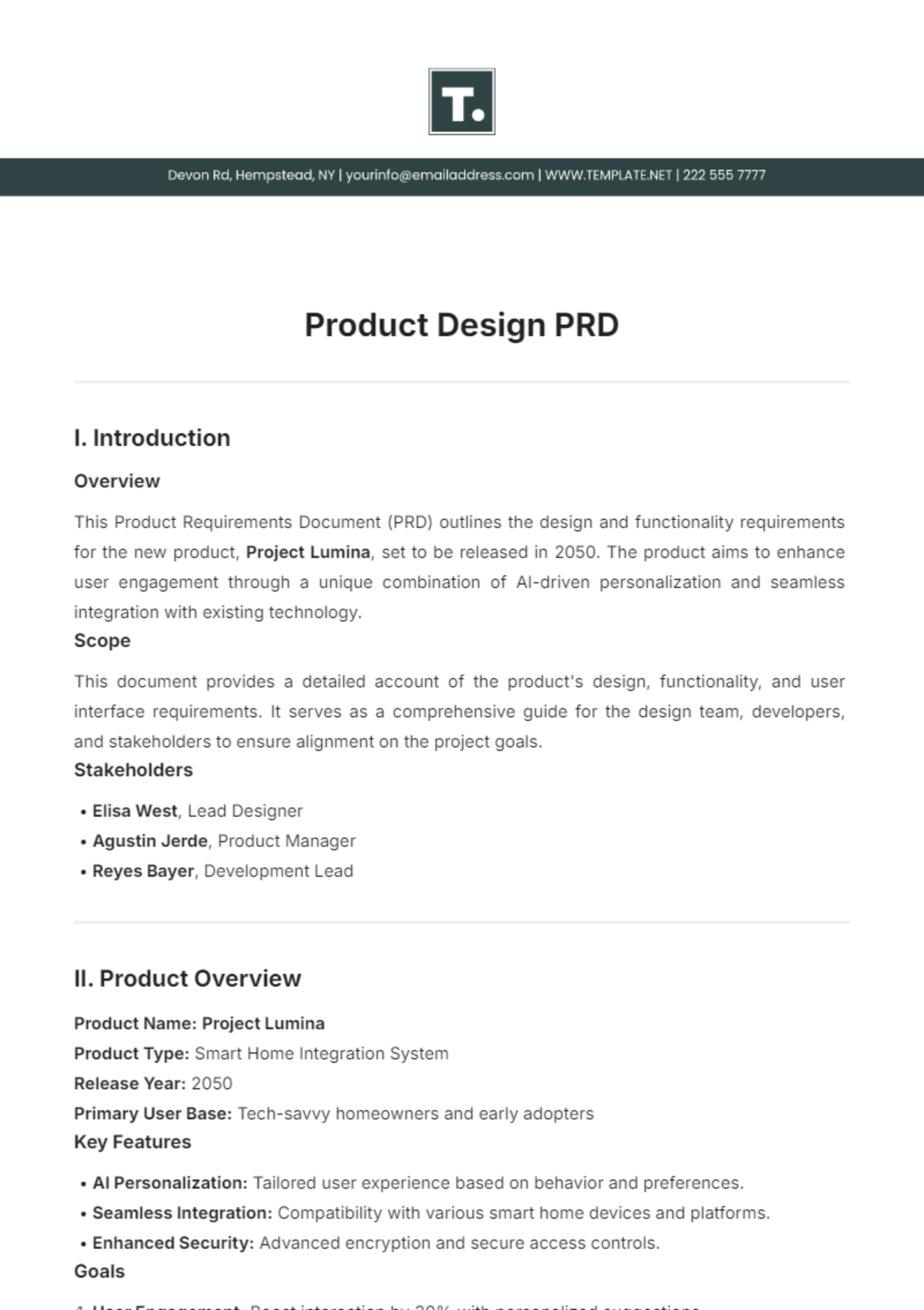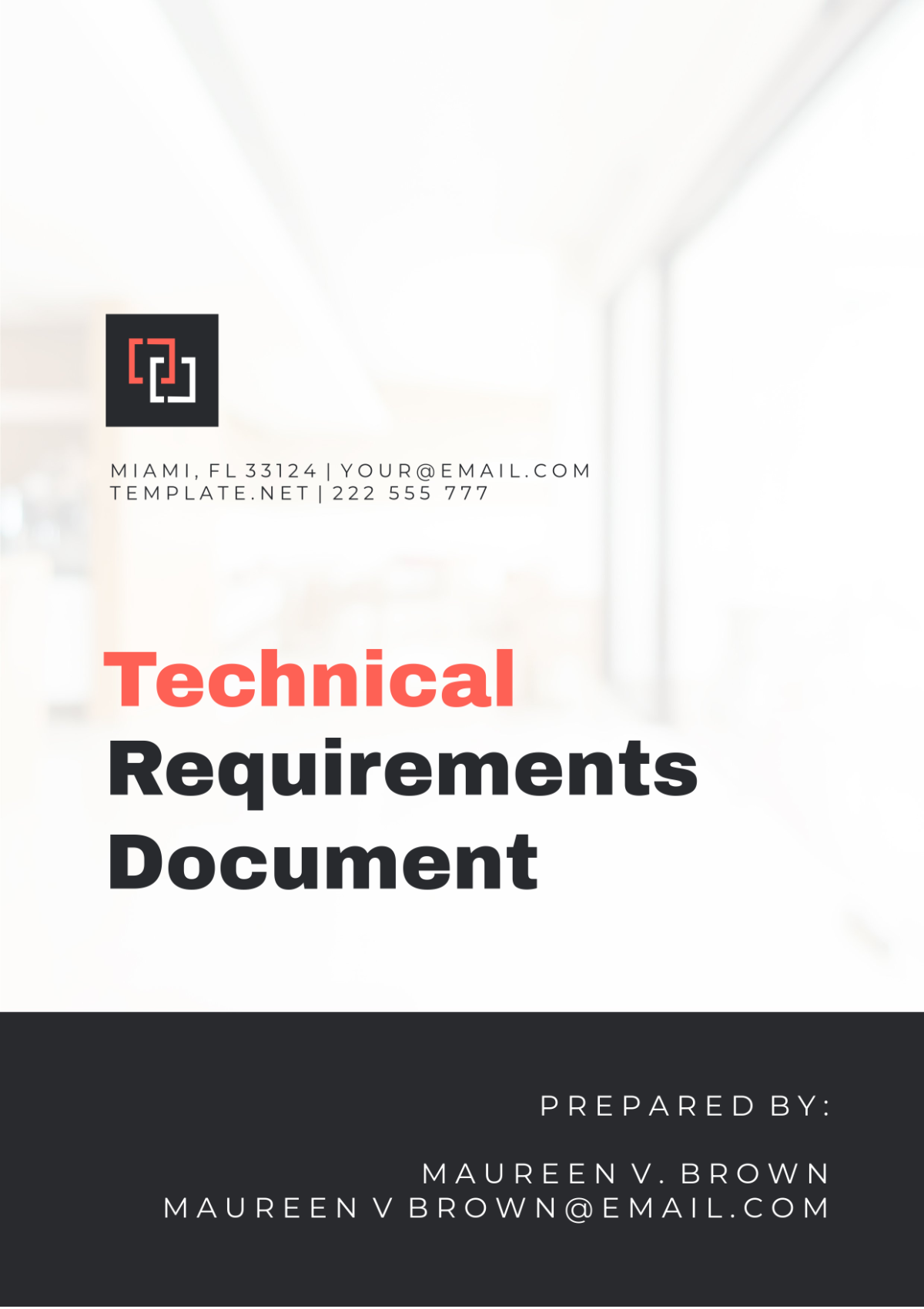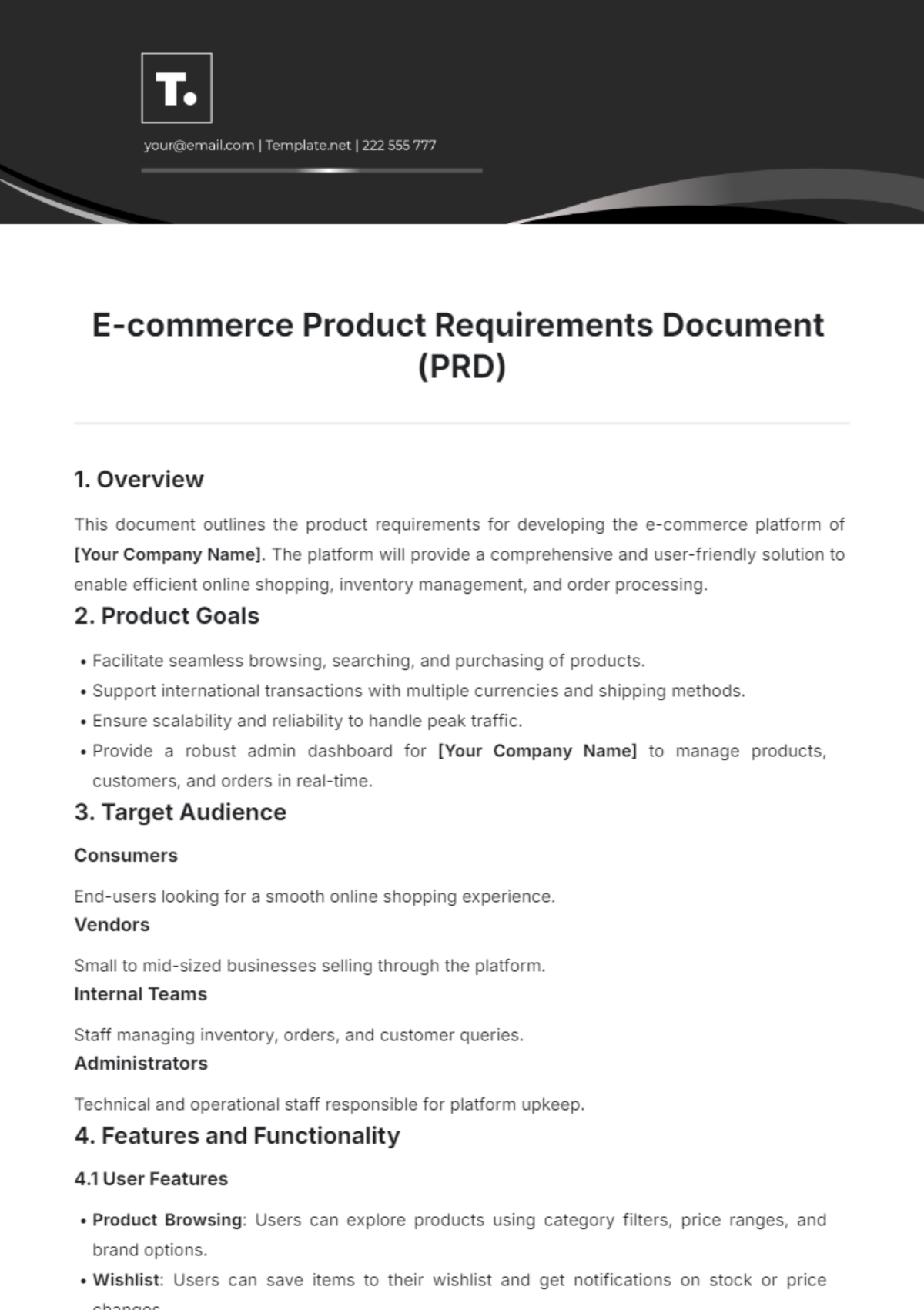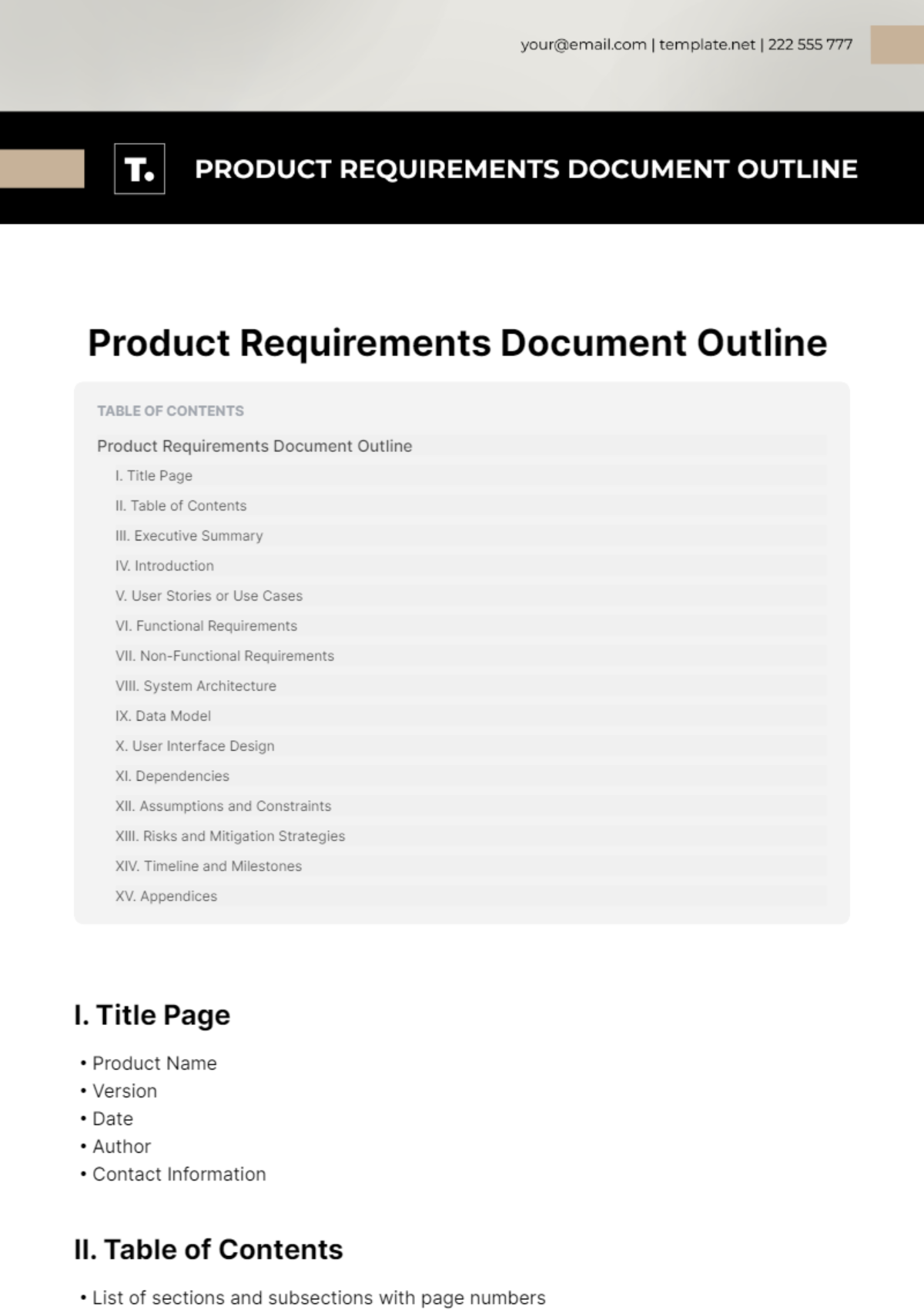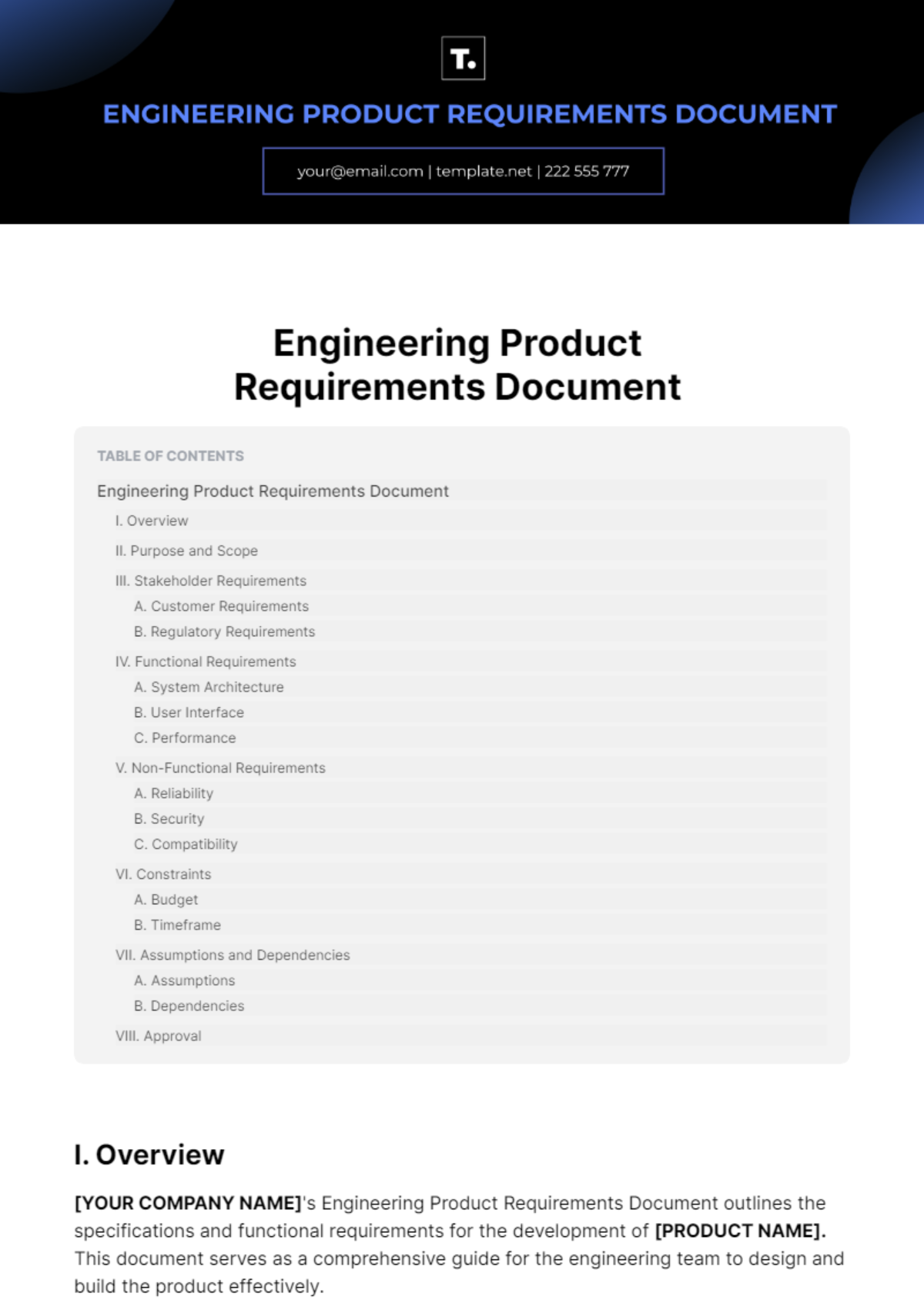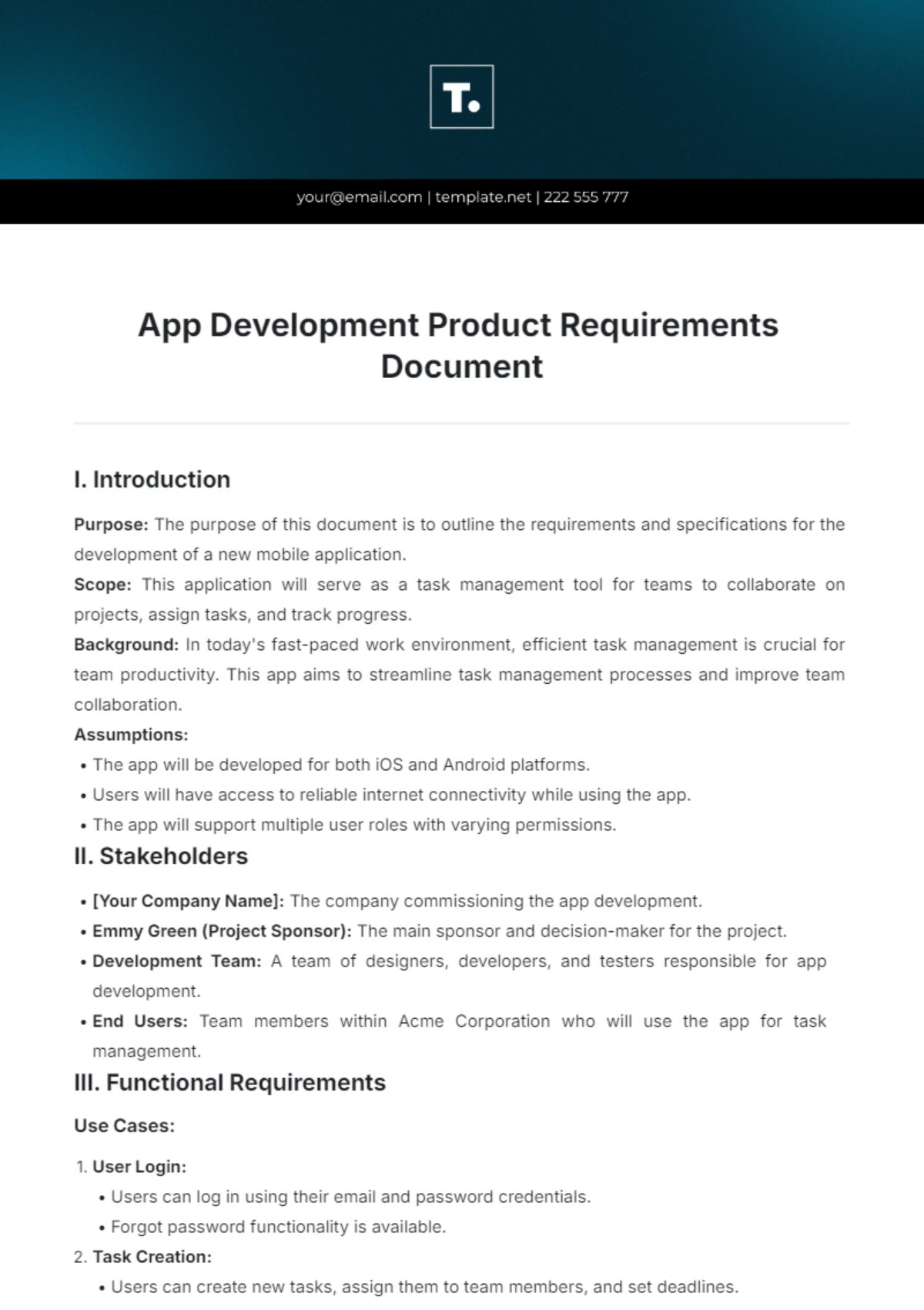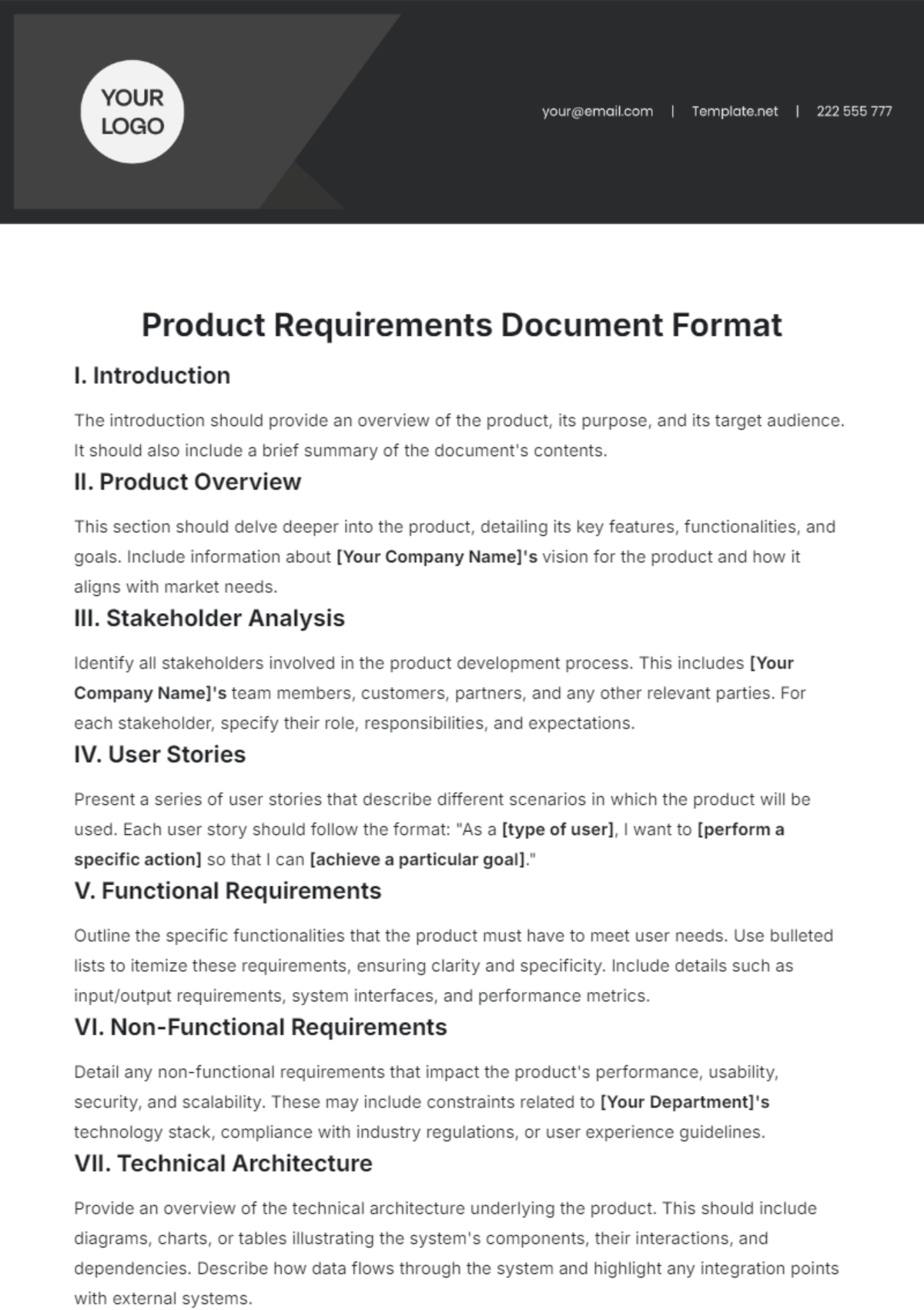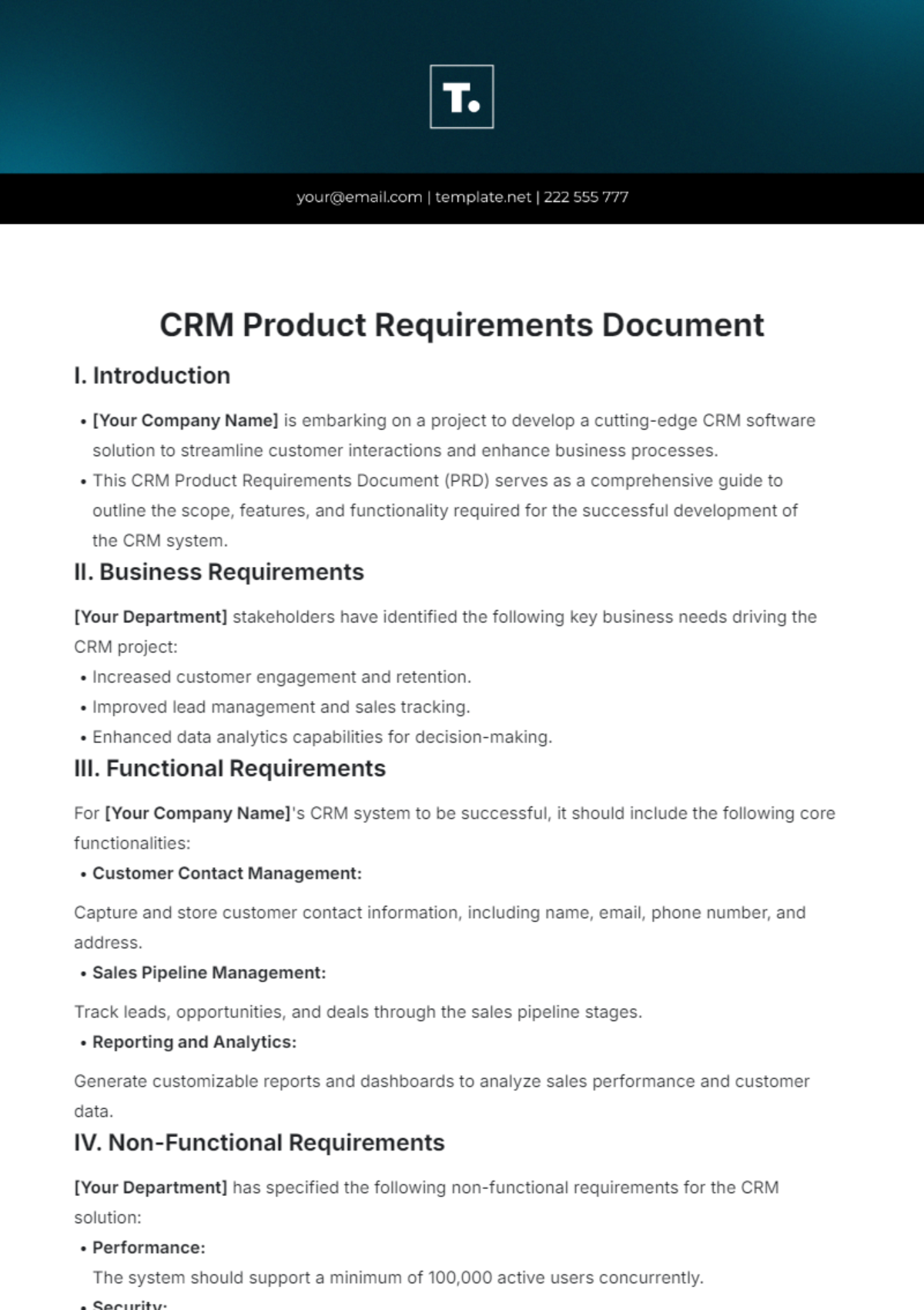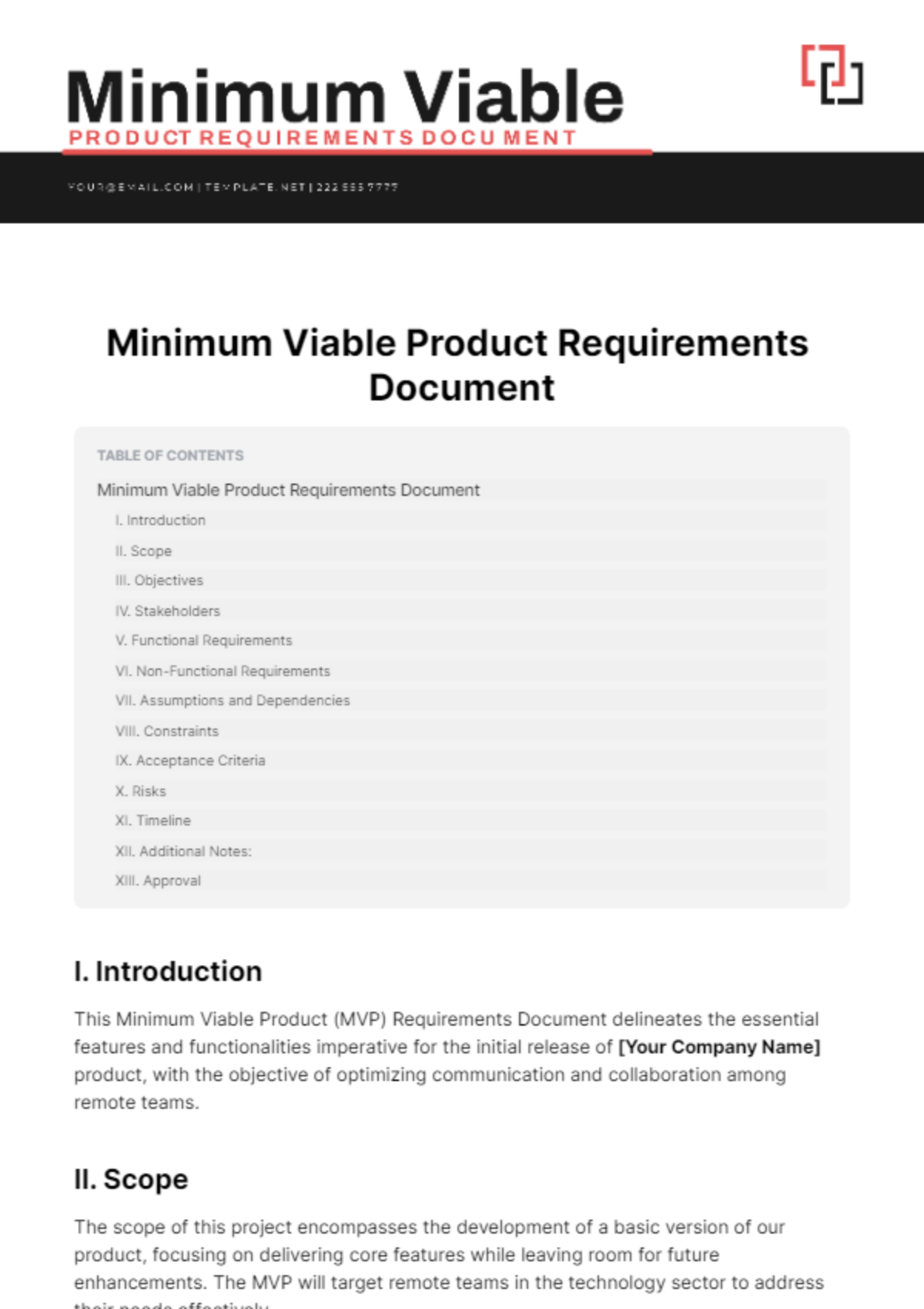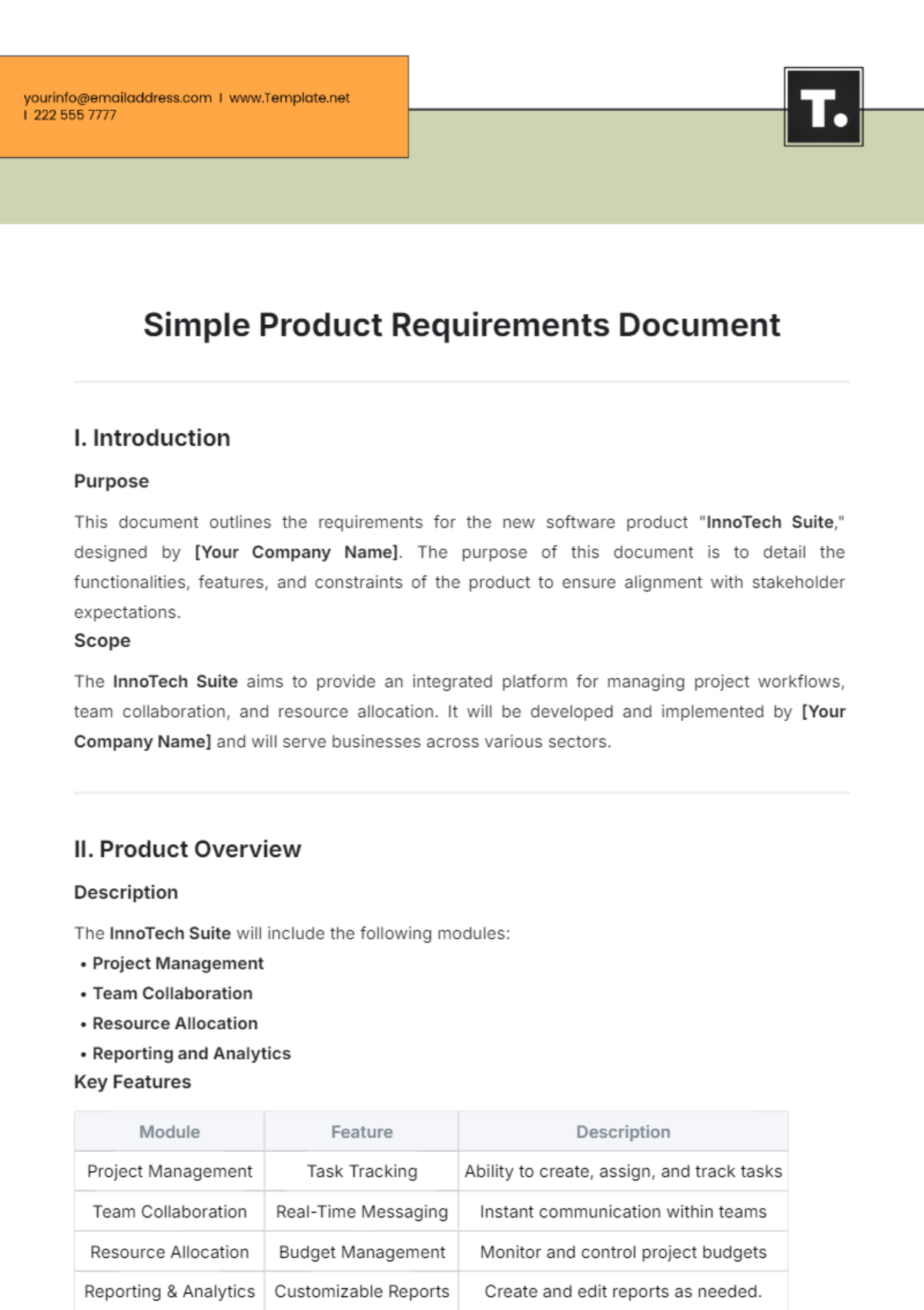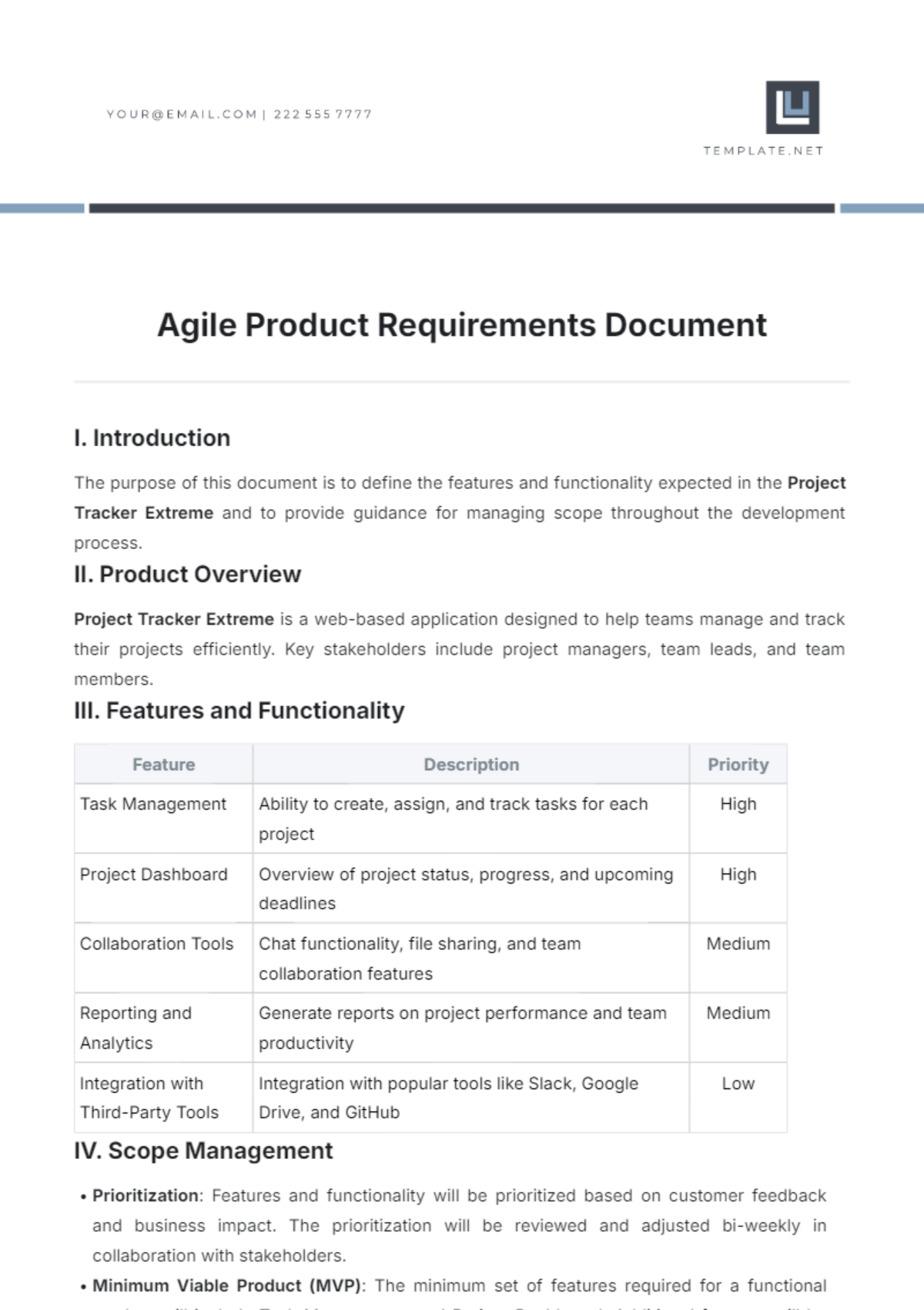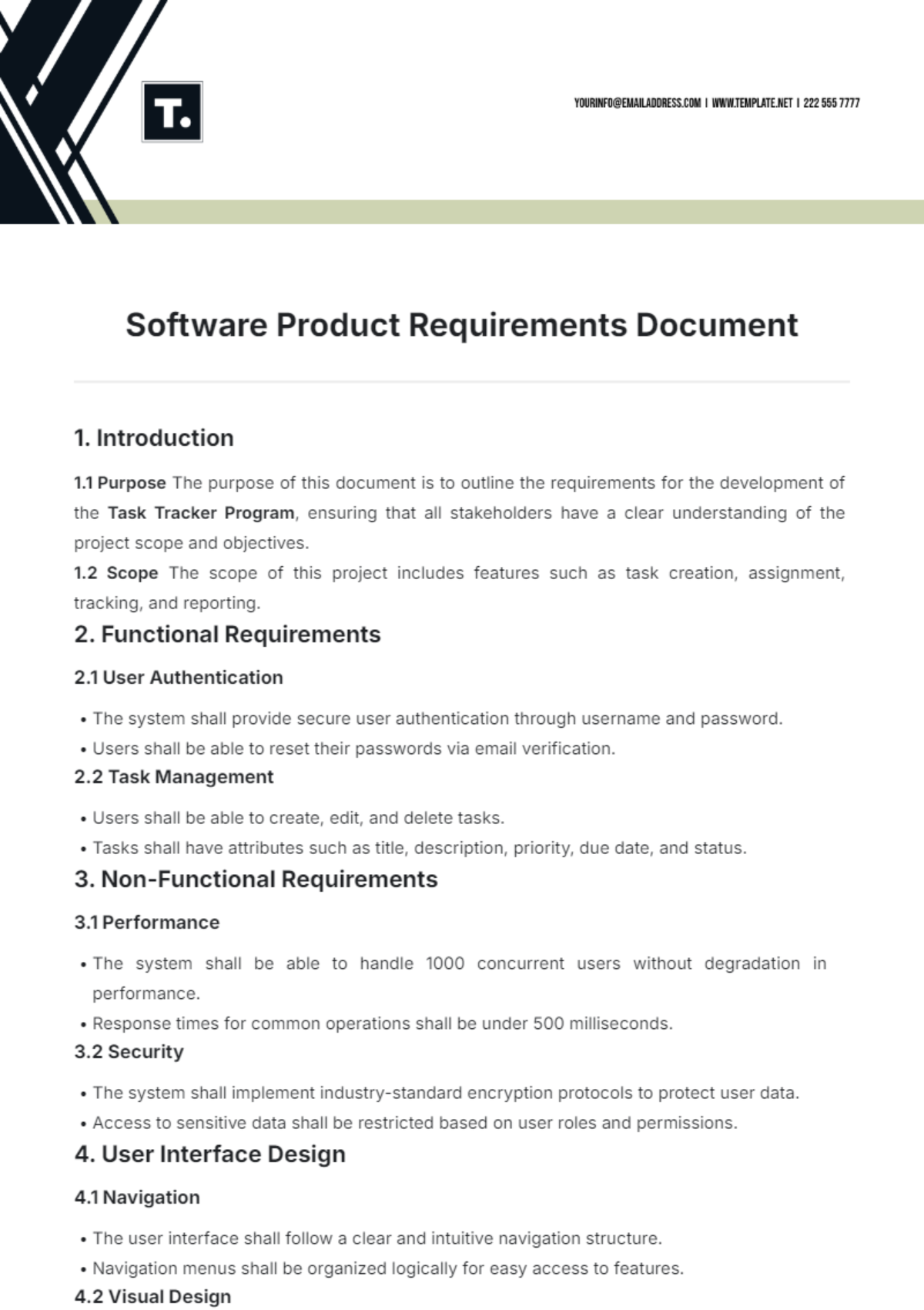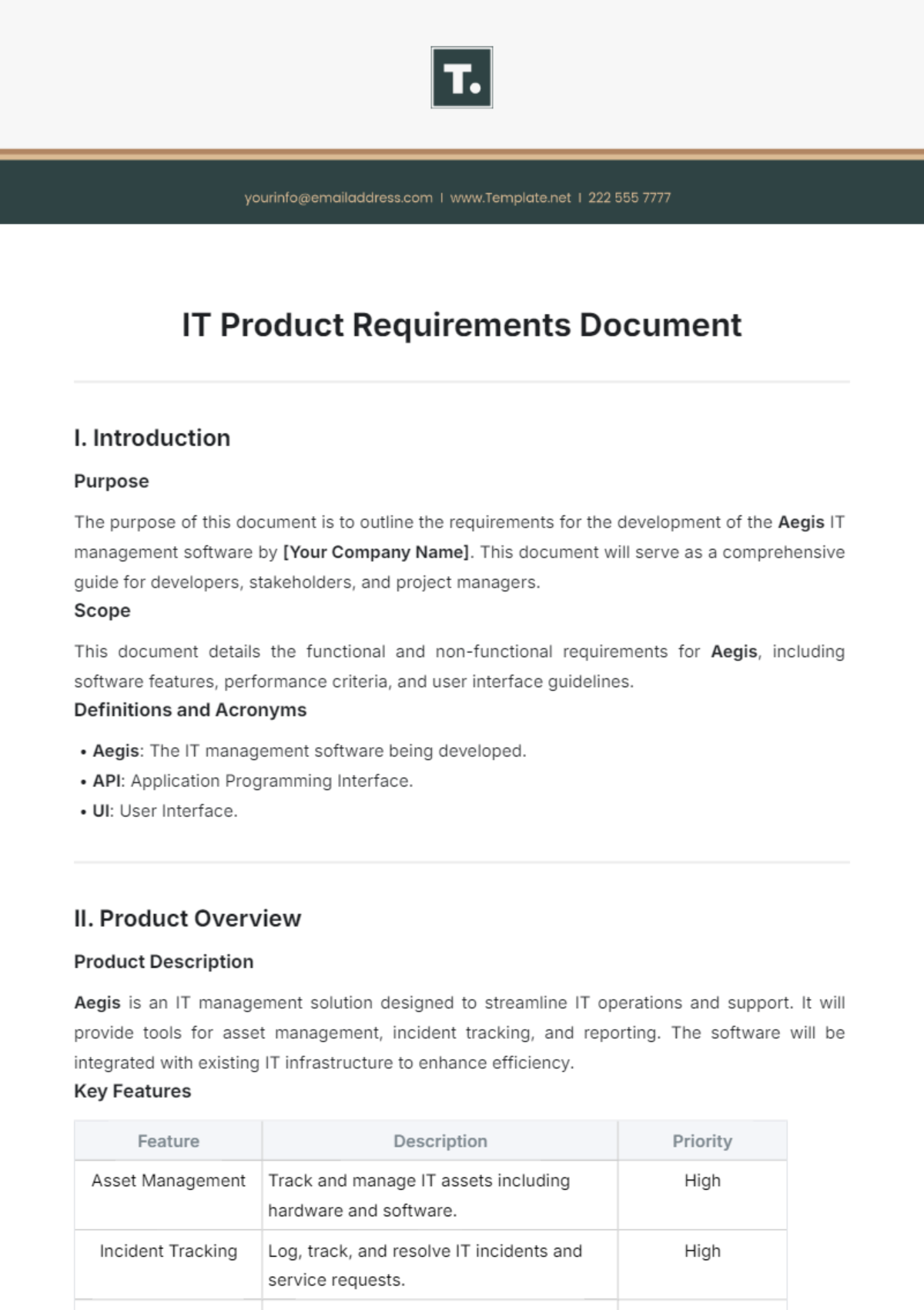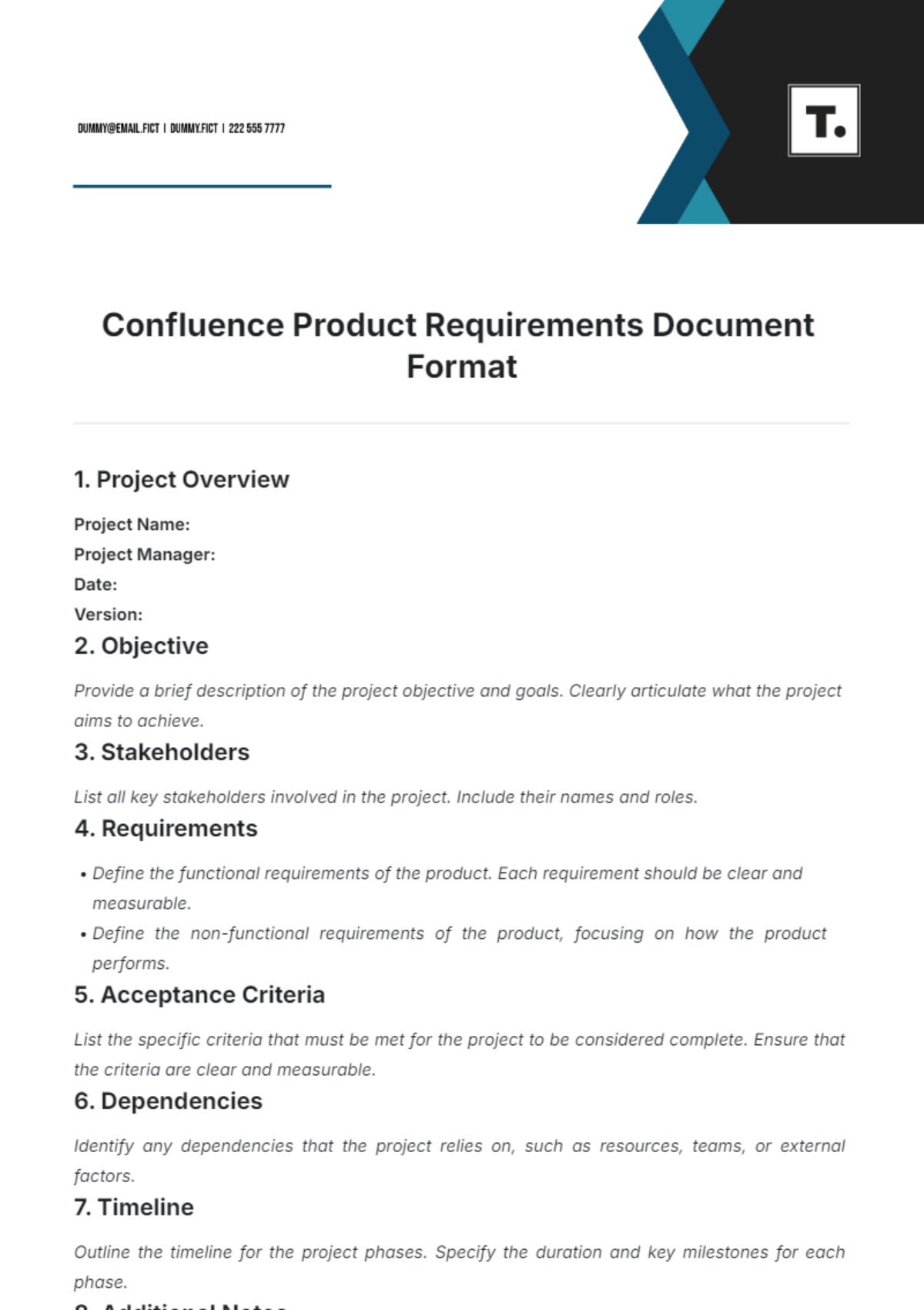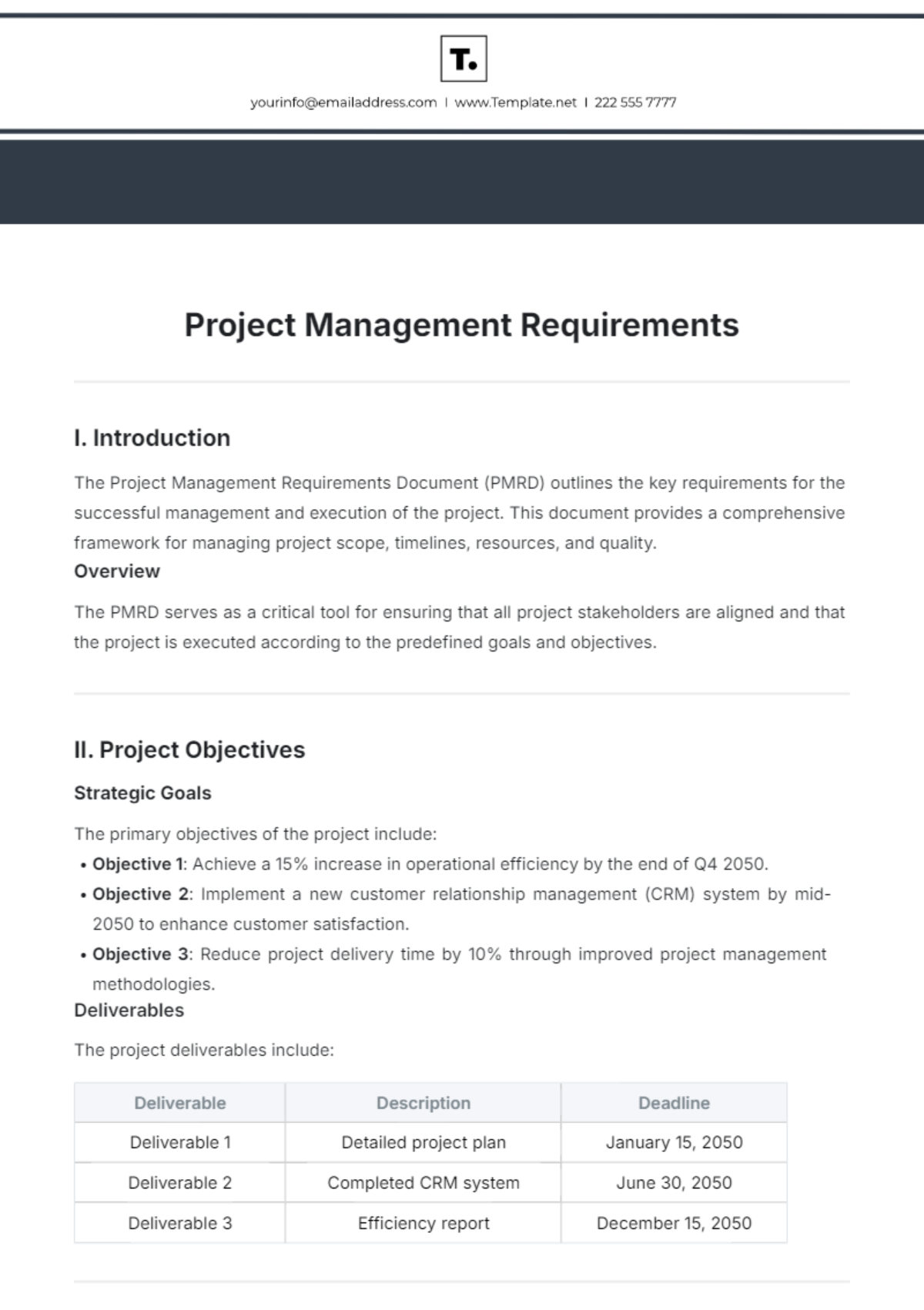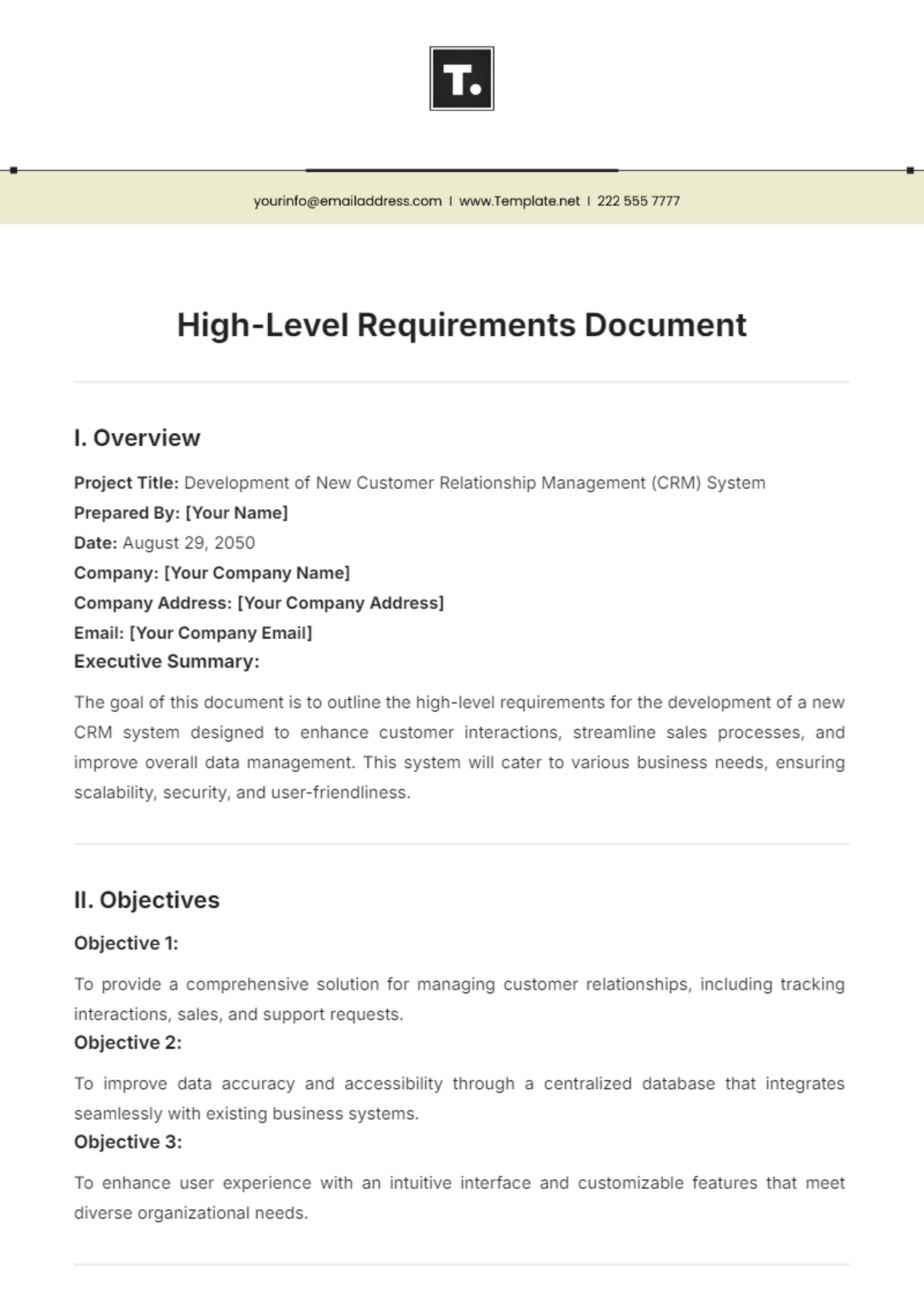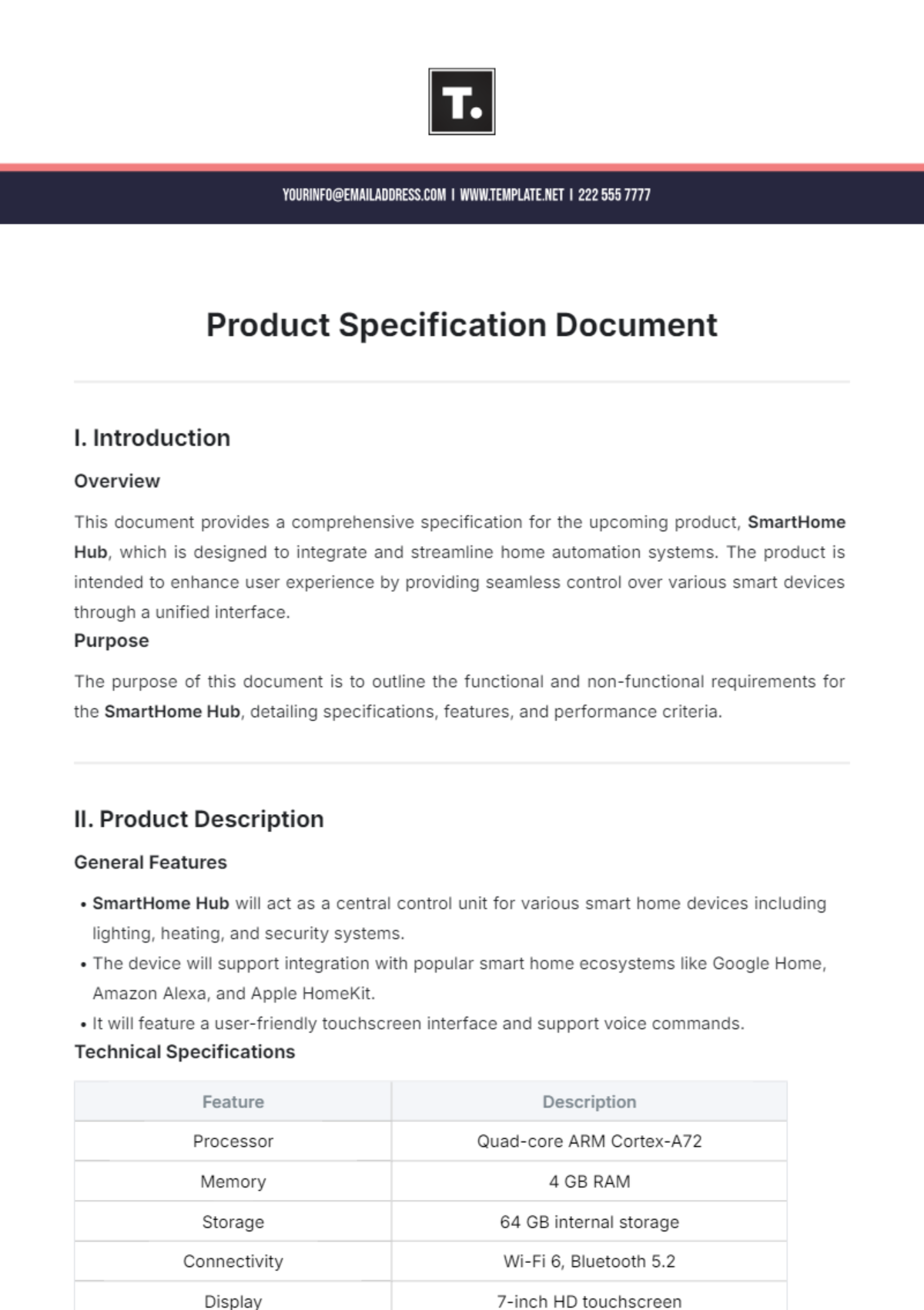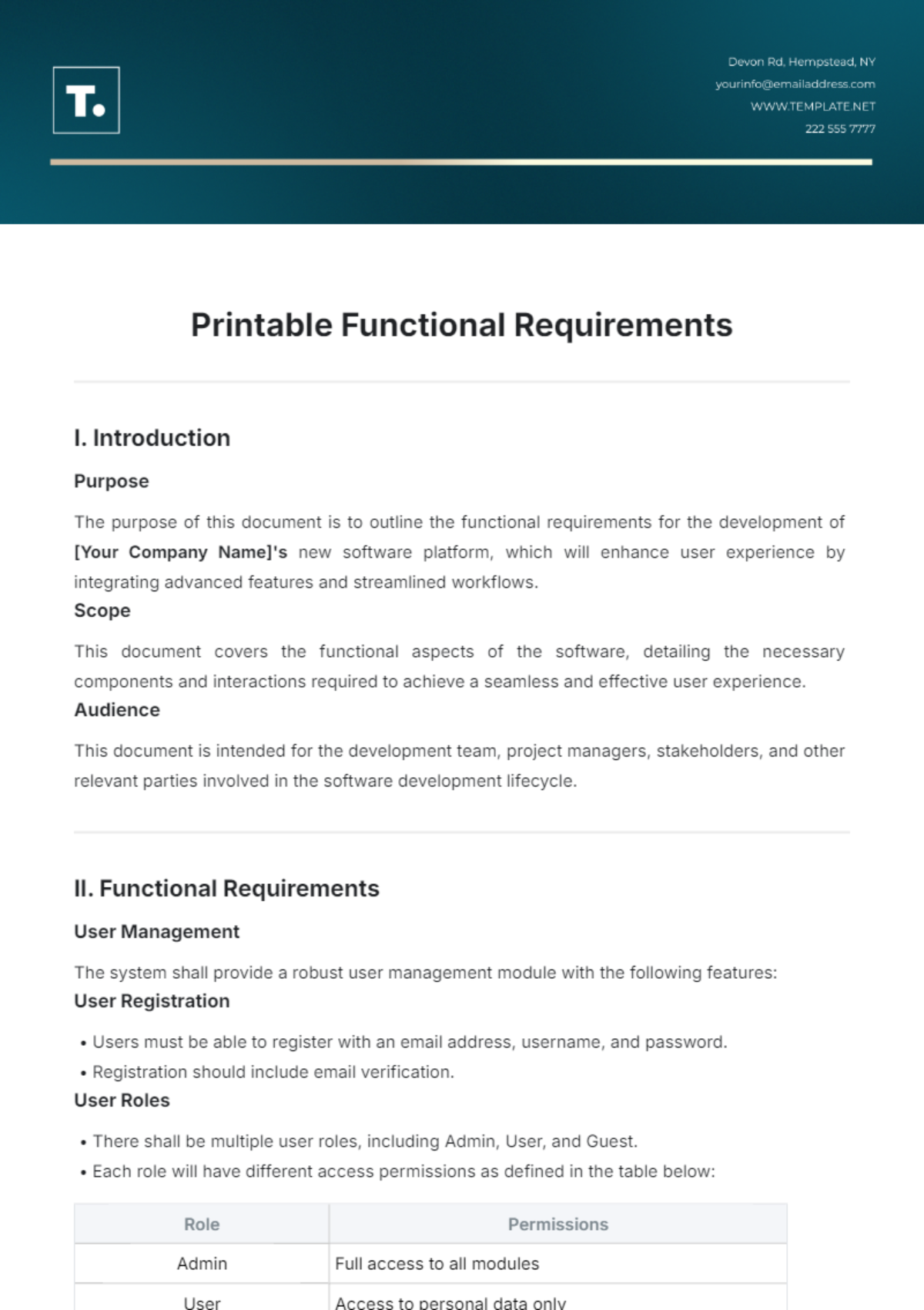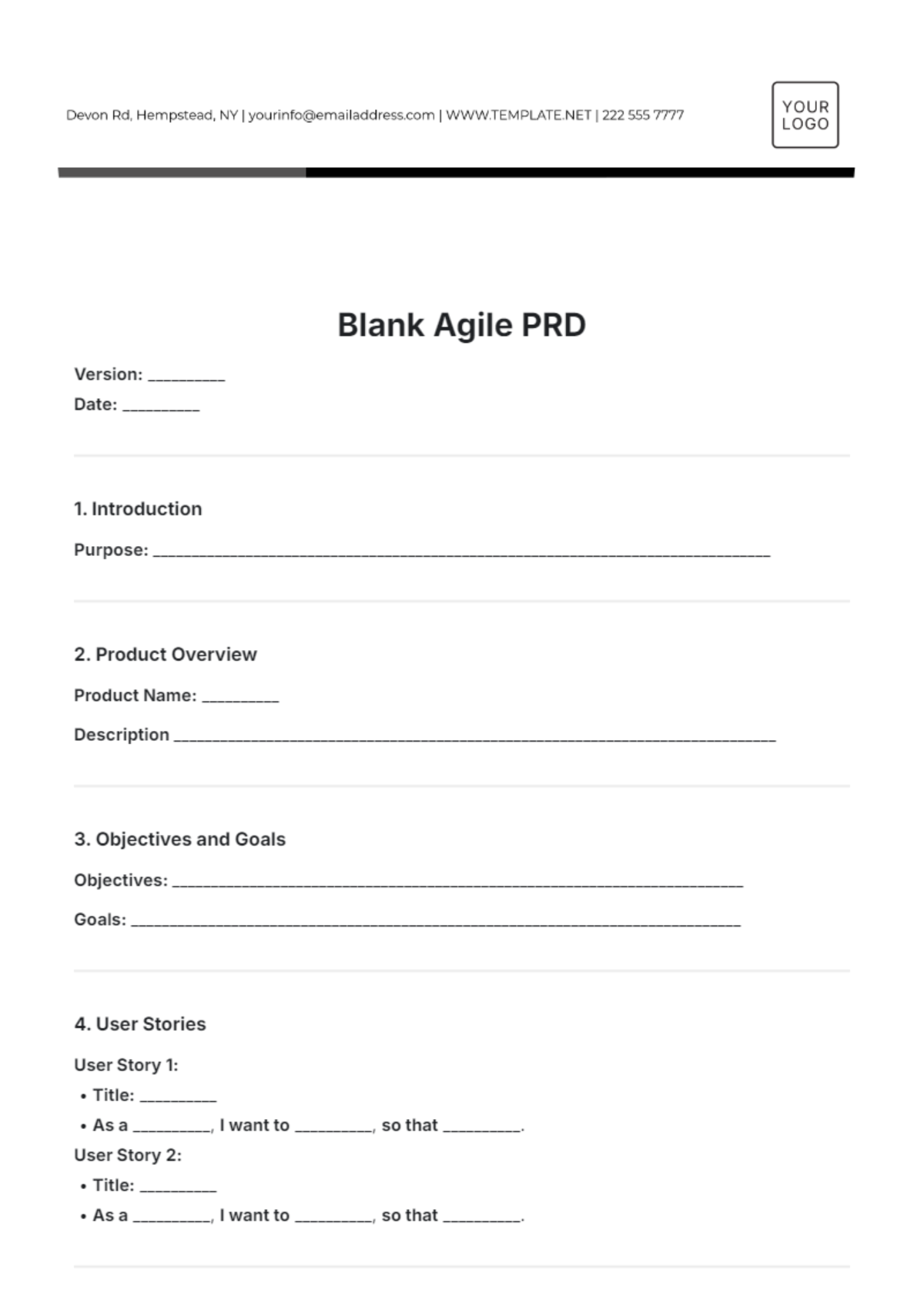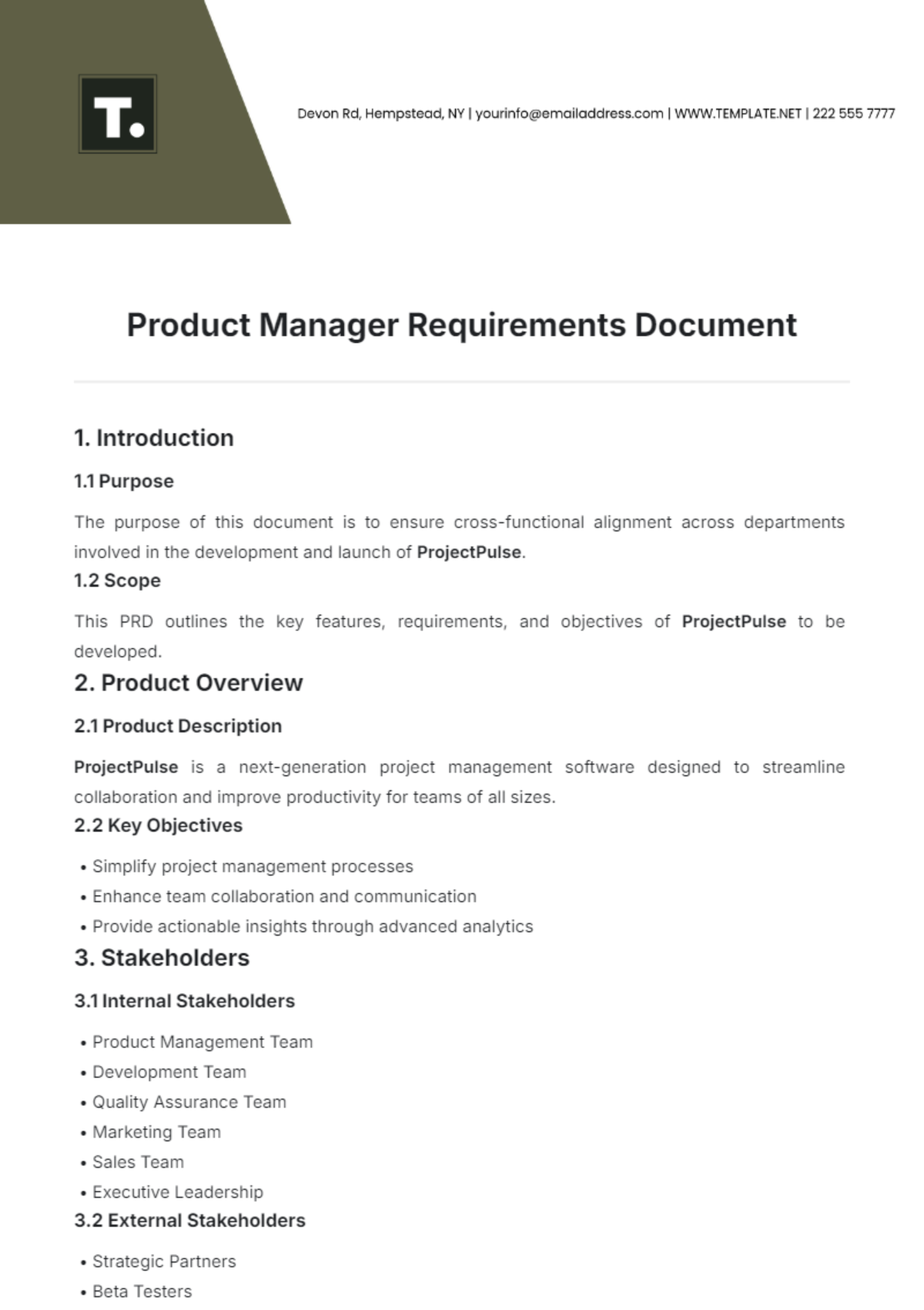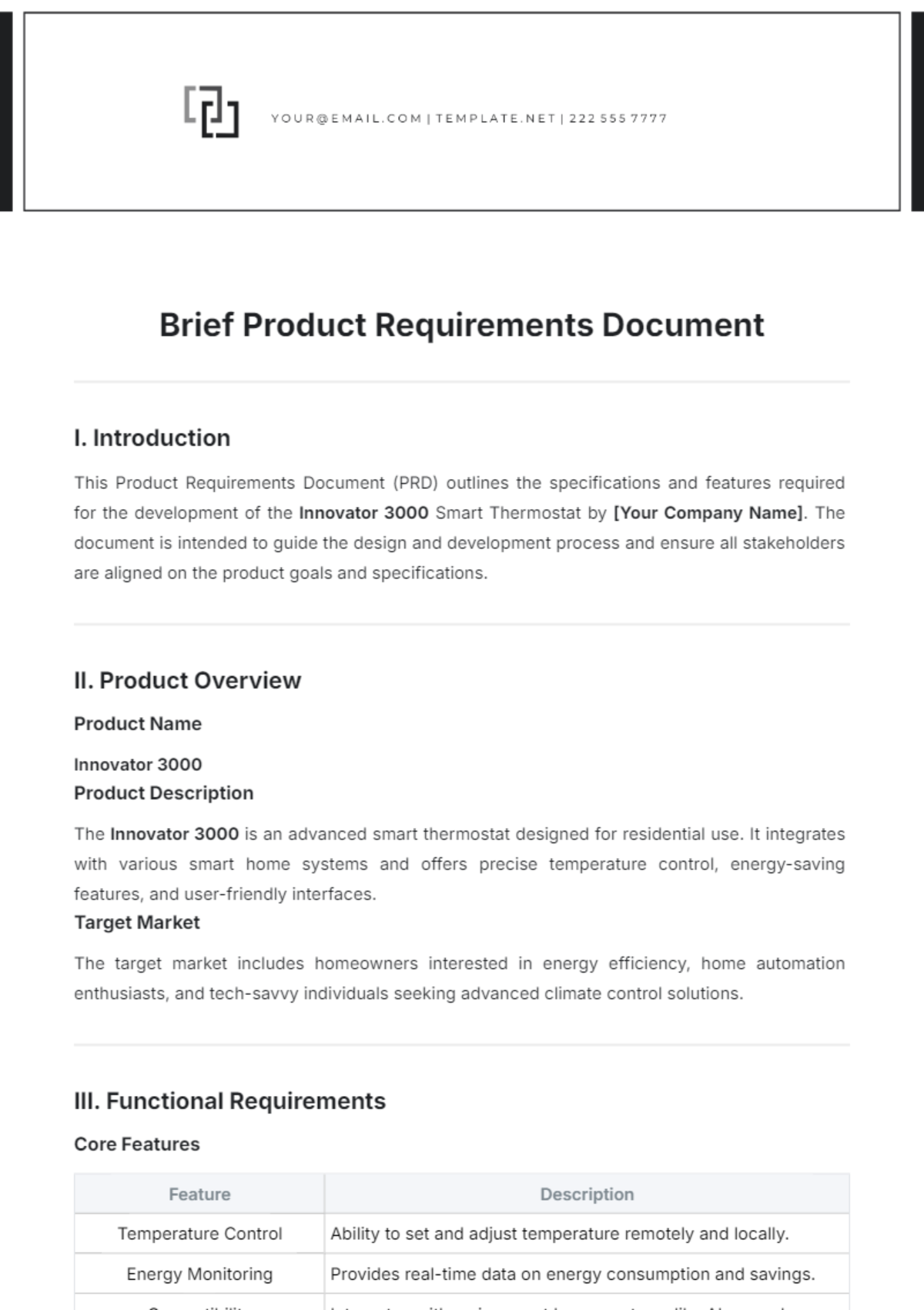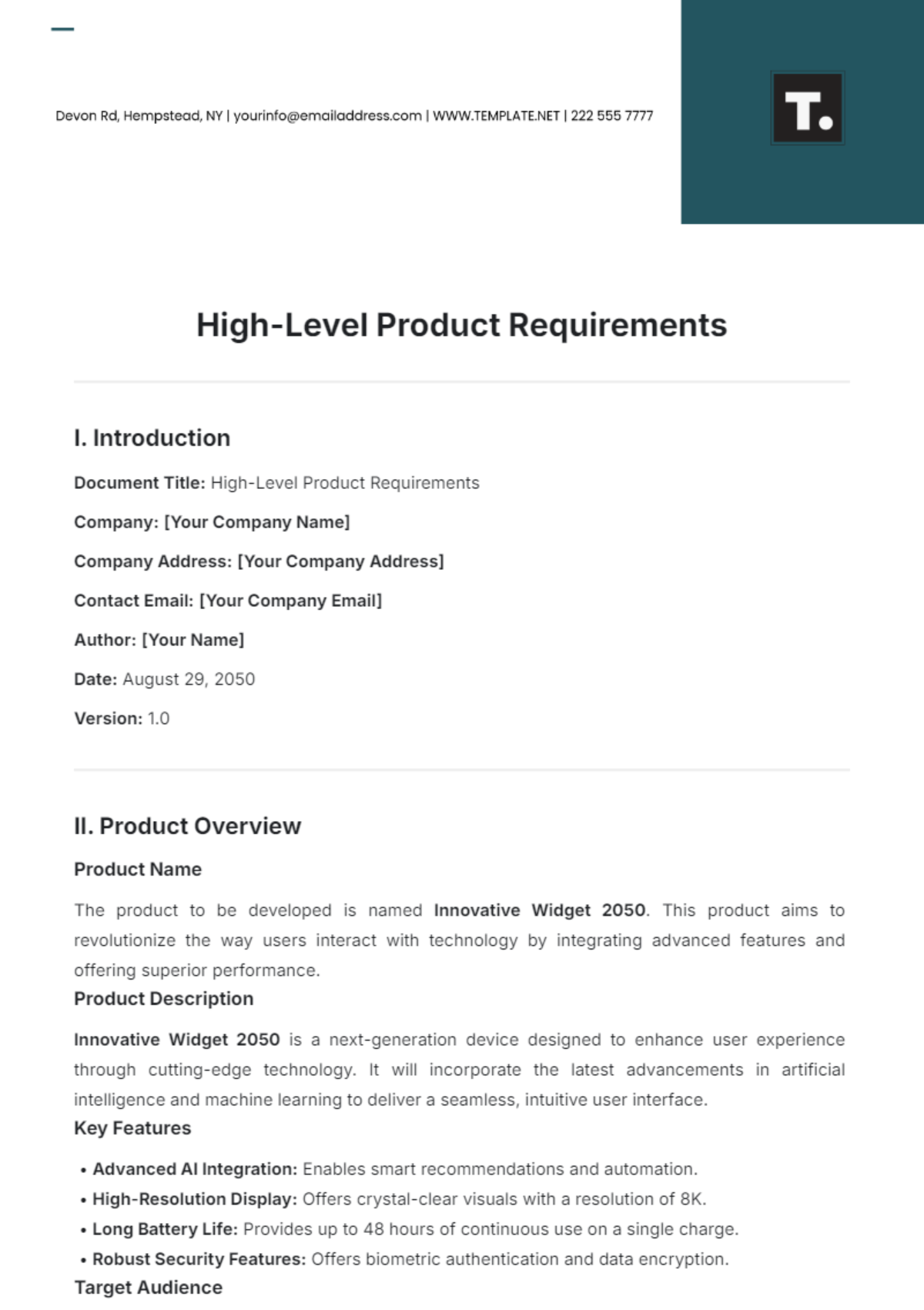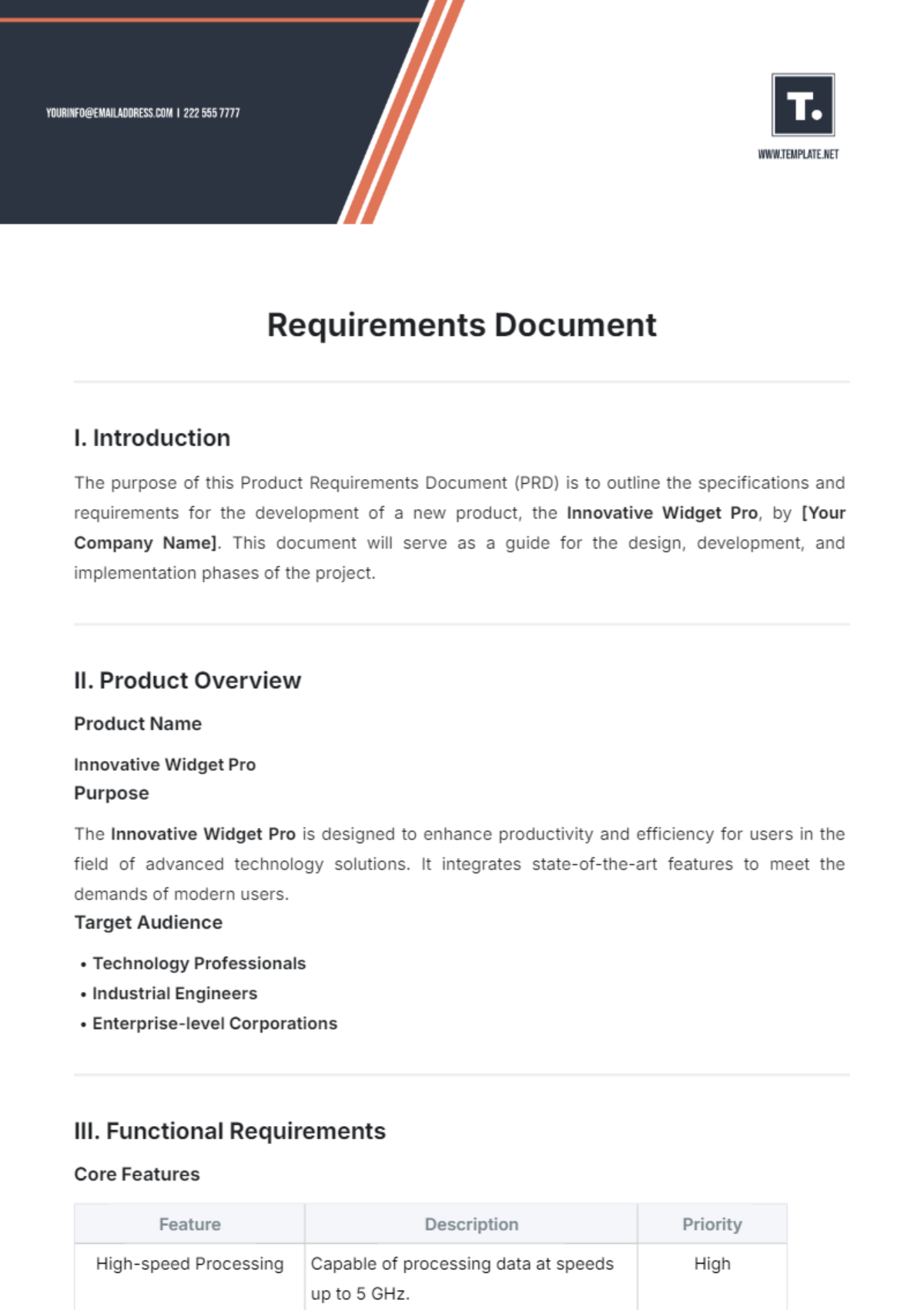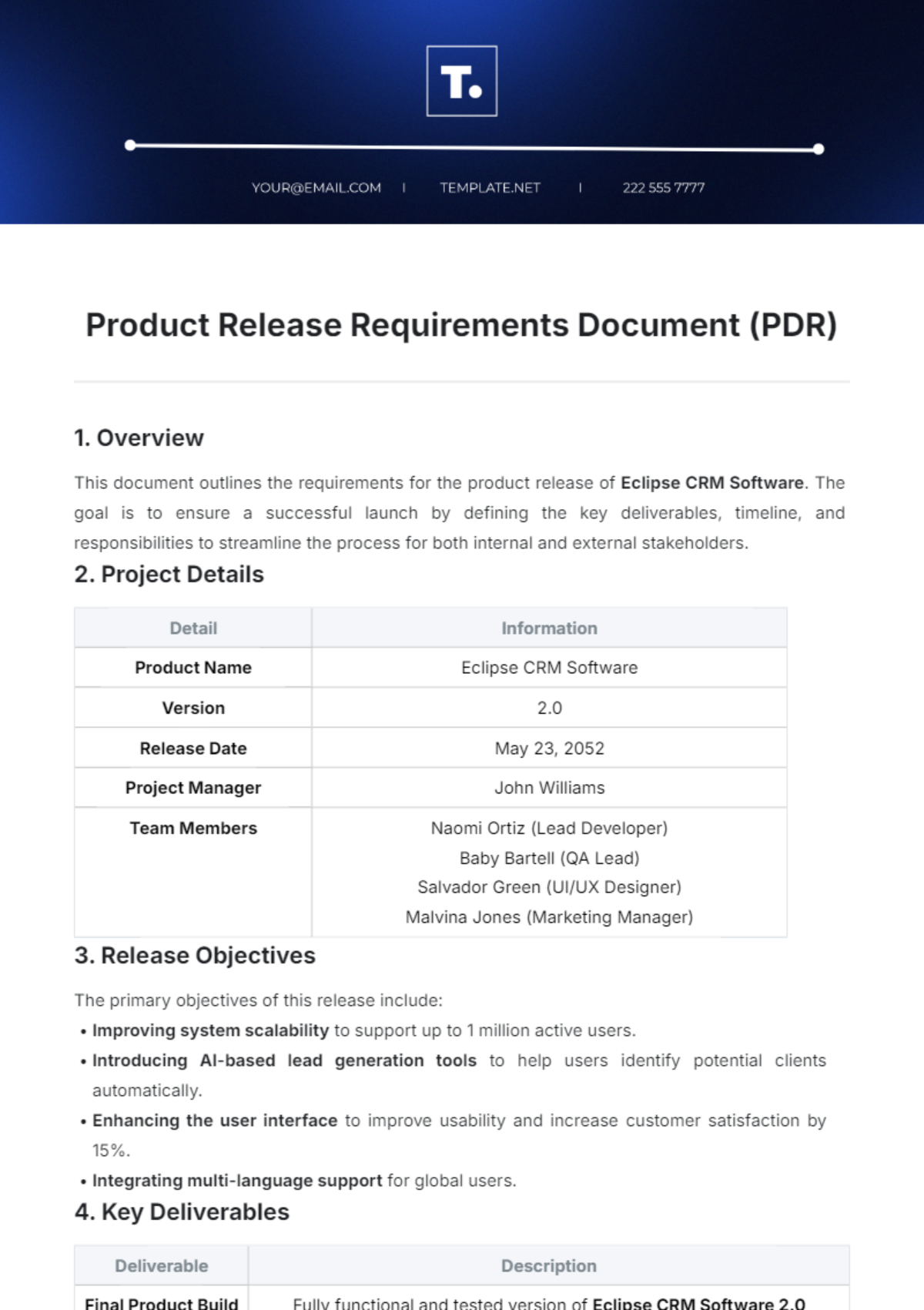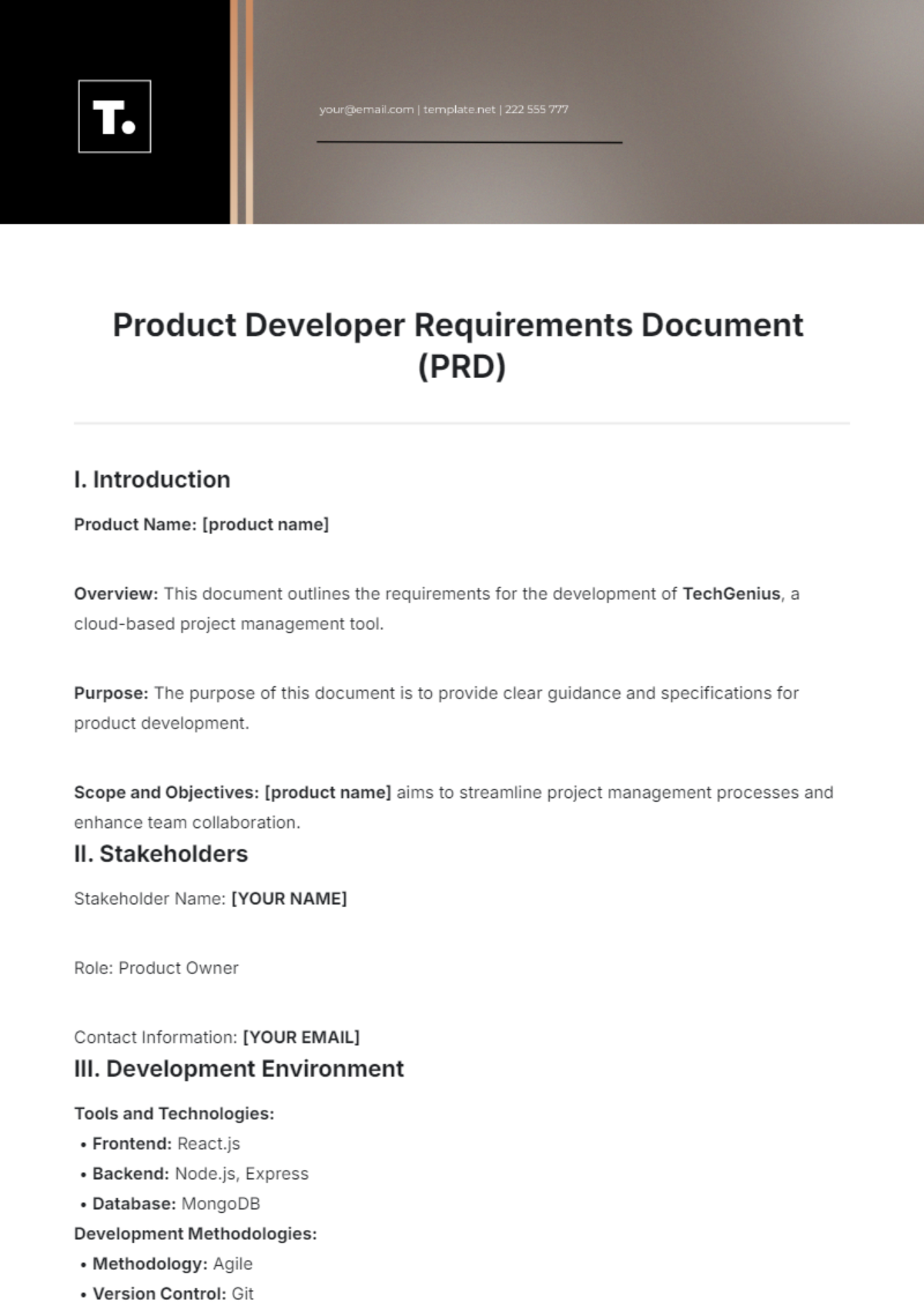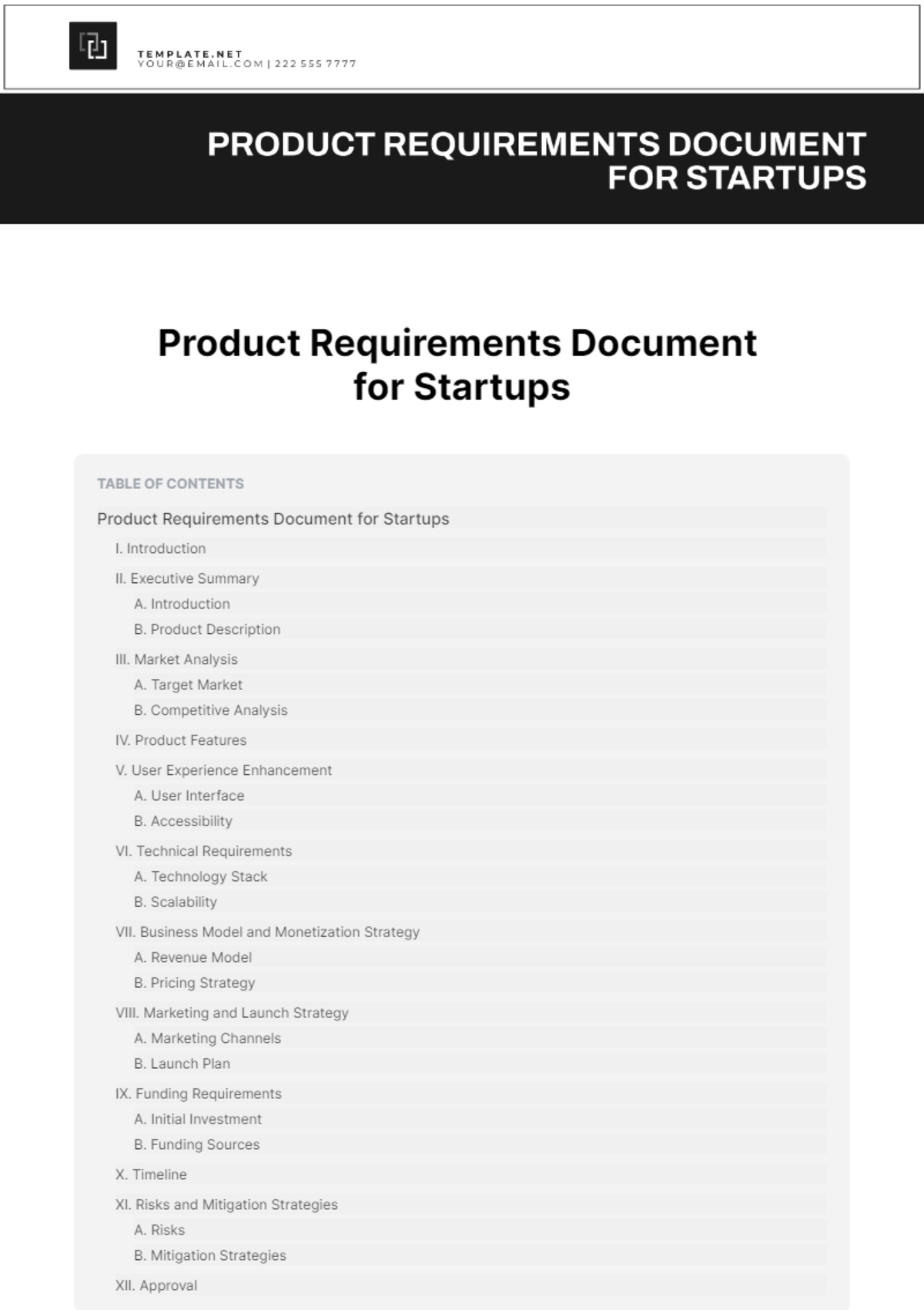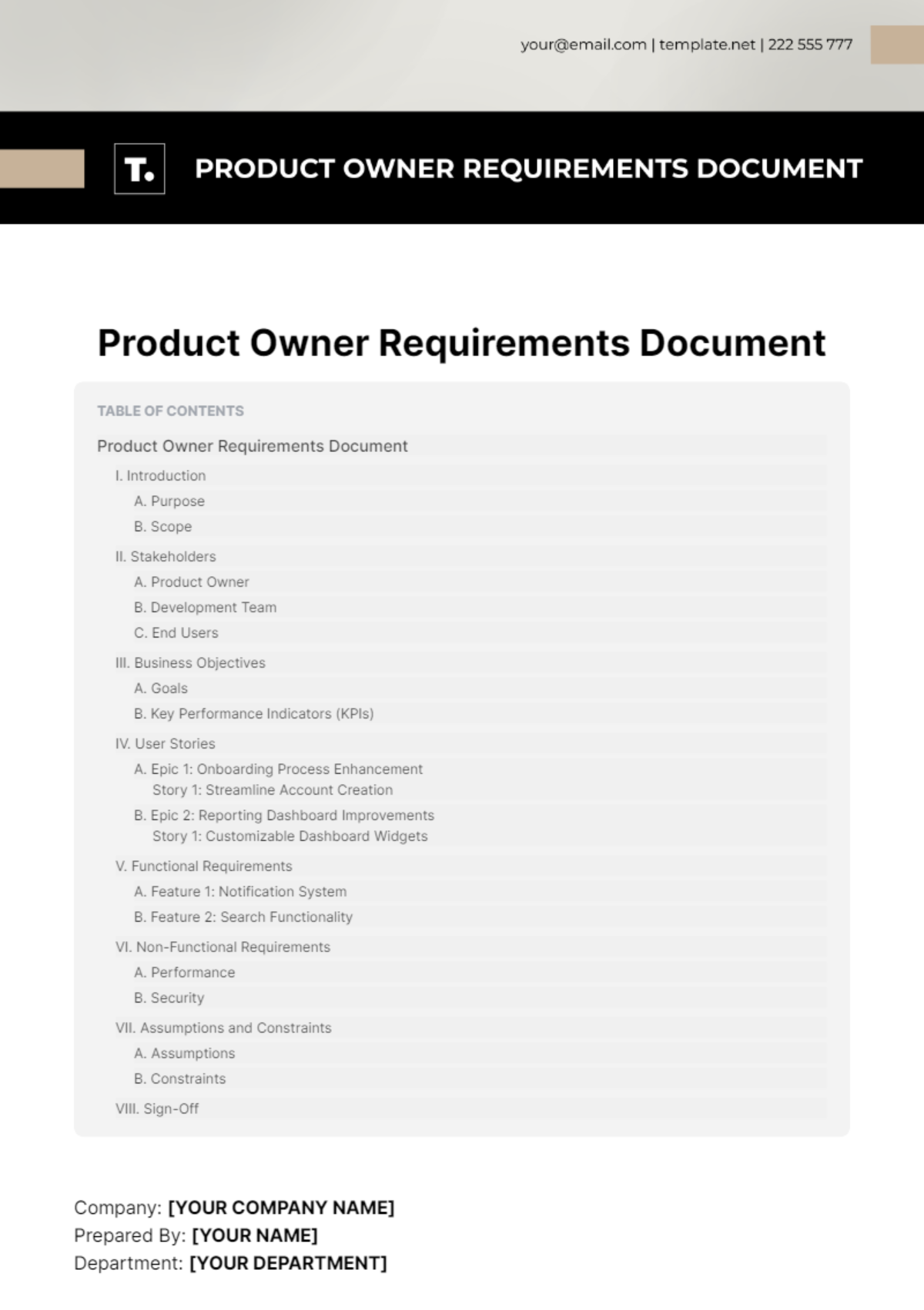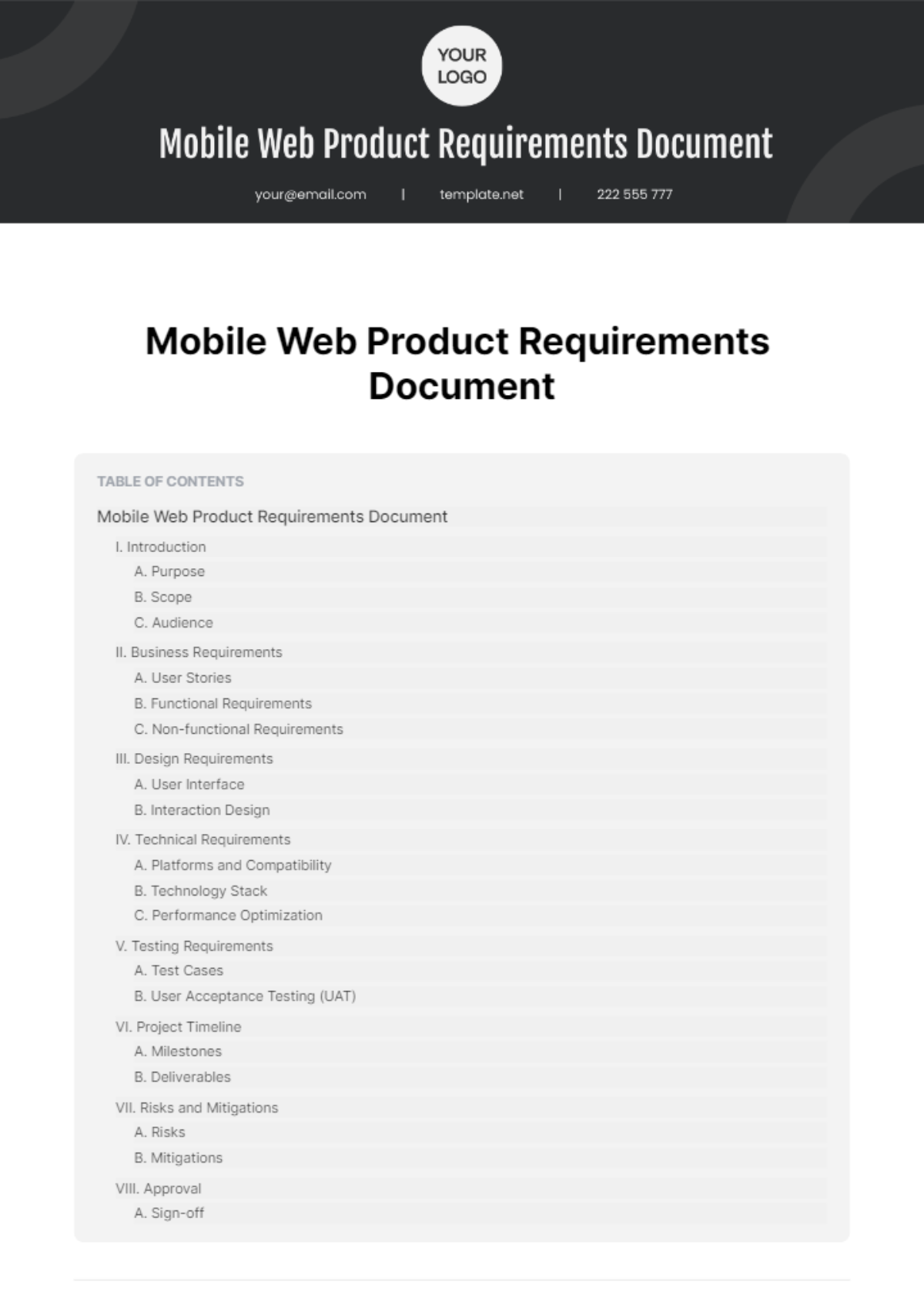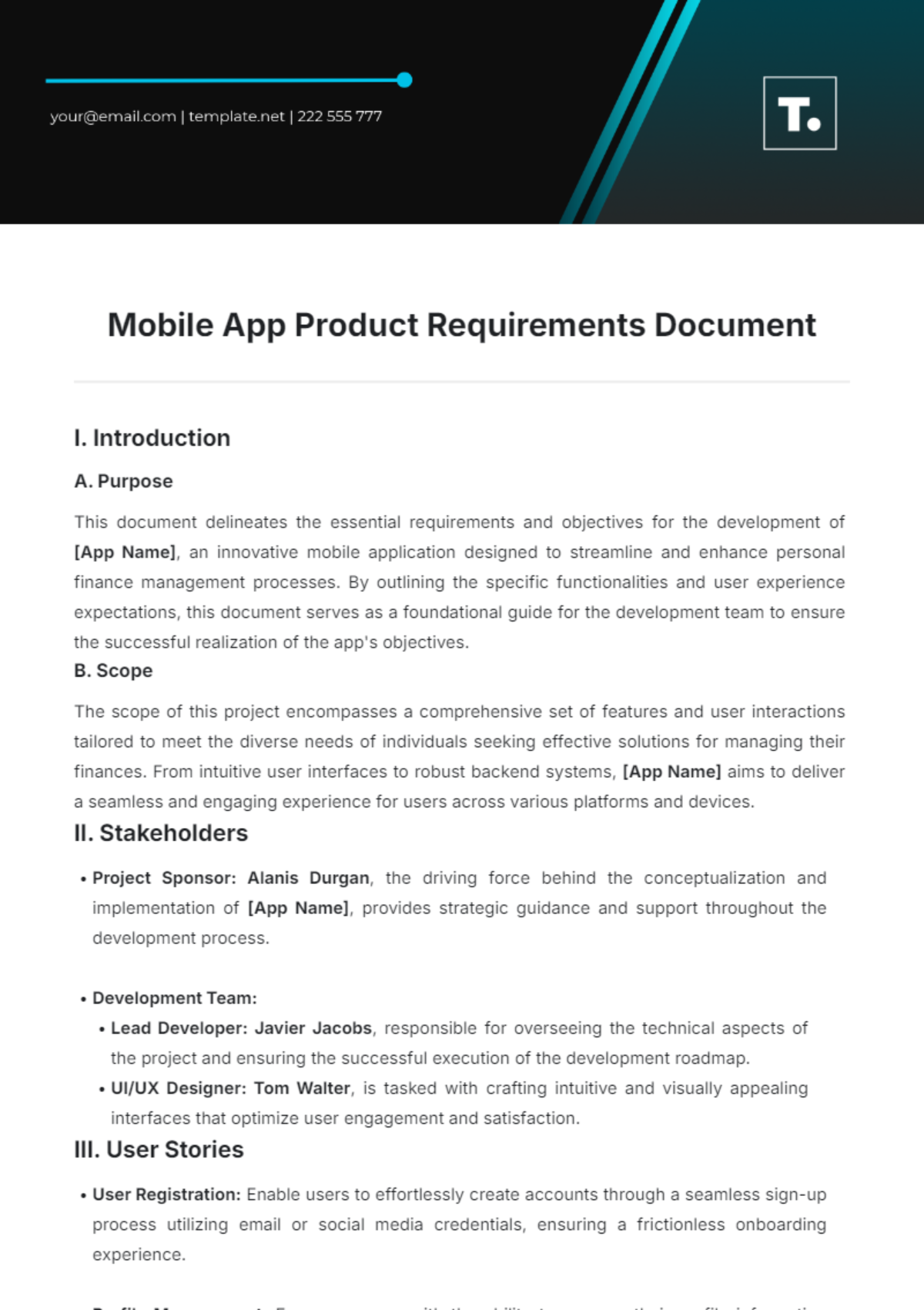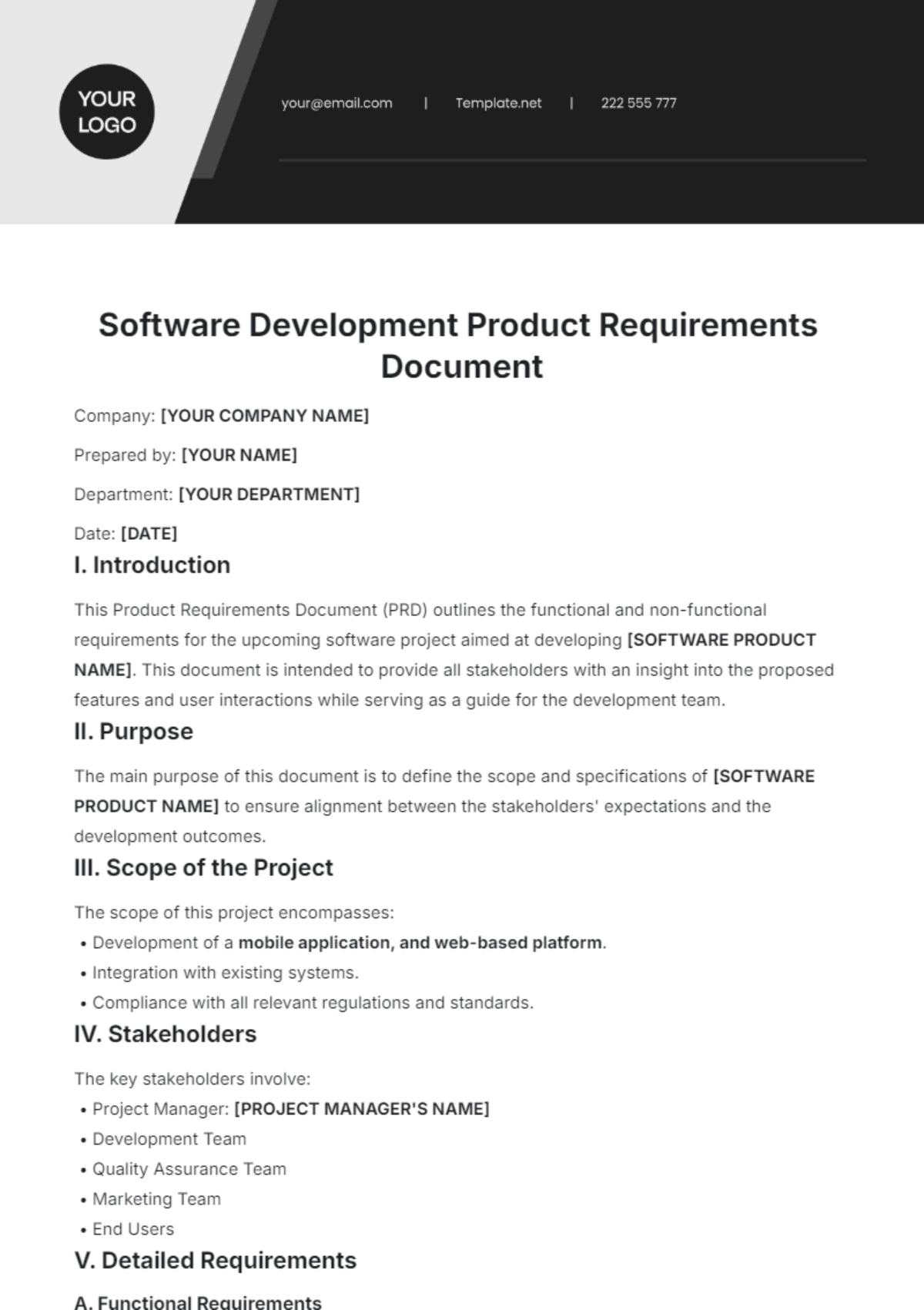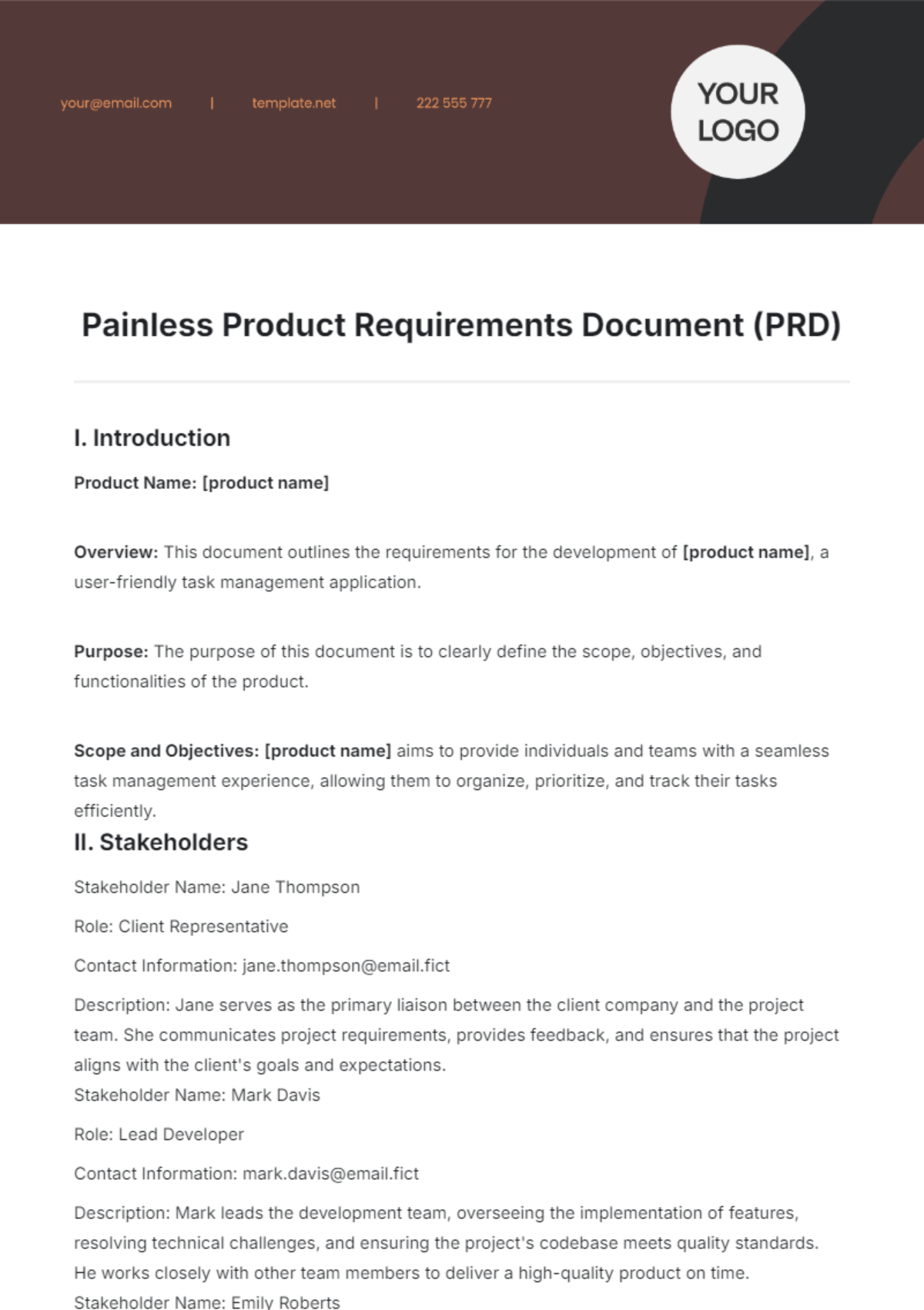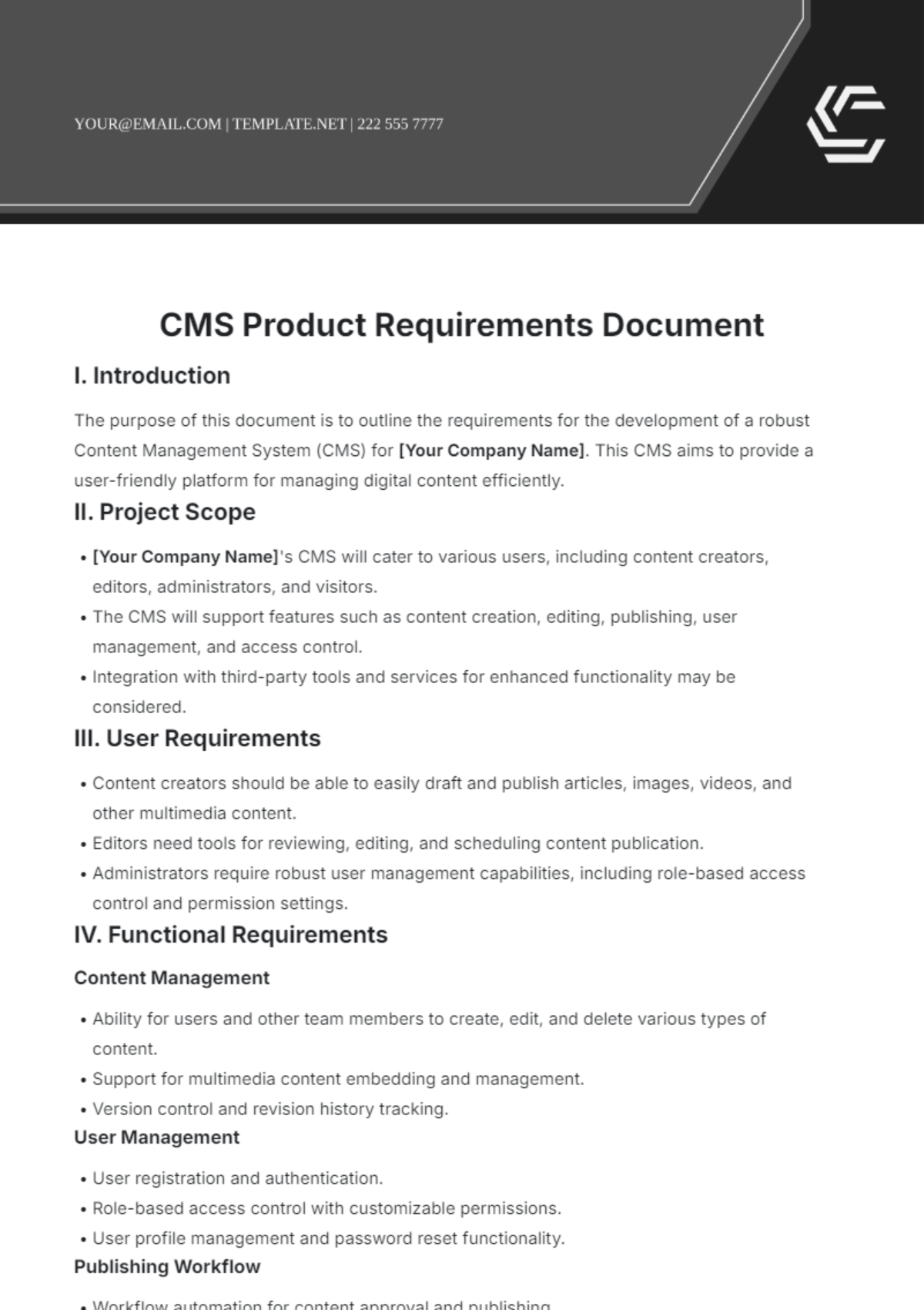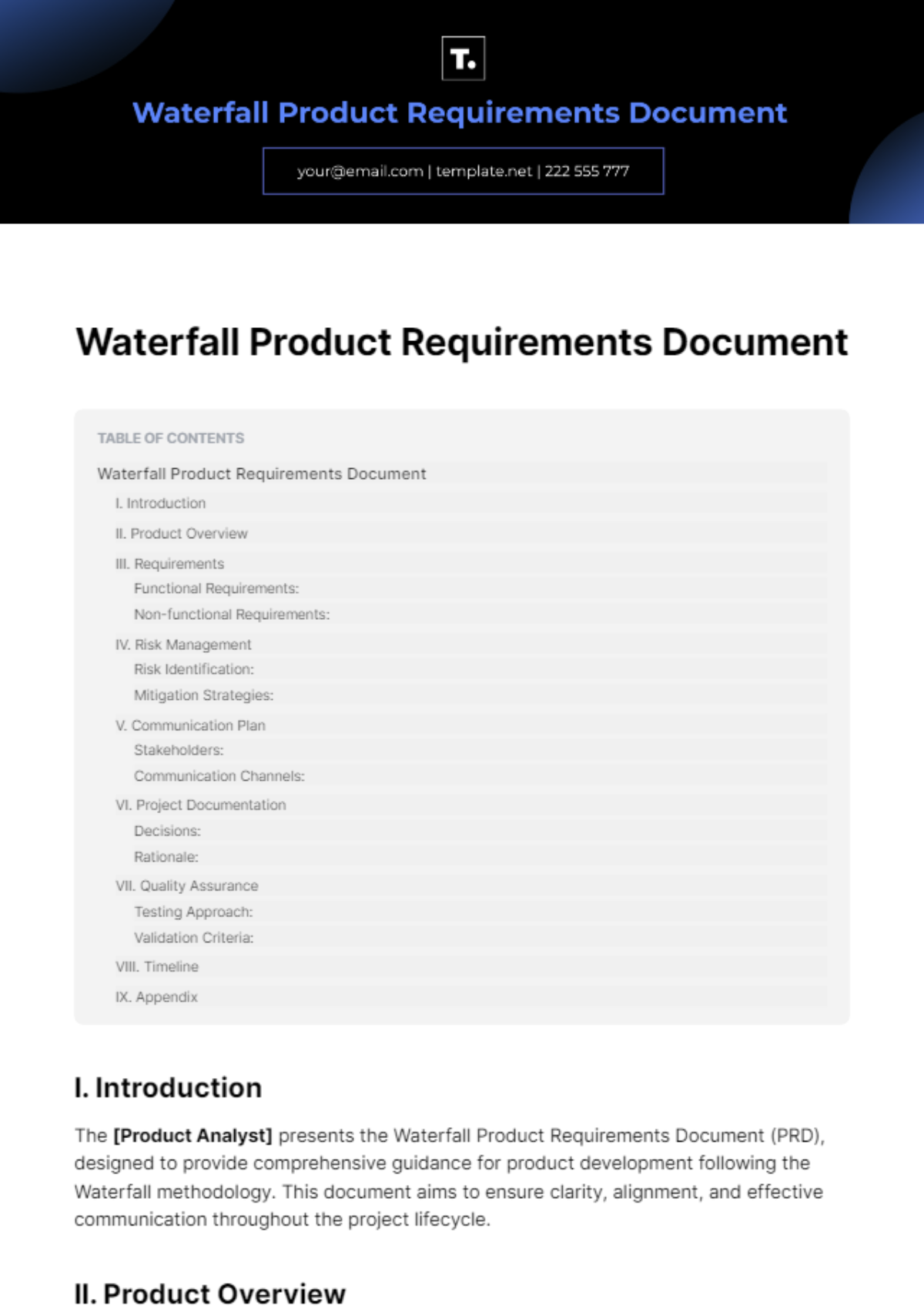Mobile Web Product Requirements Document
I. Introduction
A. Purpose
The purpose of this document is to outline the requirements and specifications for the development of a mobile web application for [Your Company Name].
B. Scope
This document will define the features, functionalities, and design elements of the mobile web application, ensuring alignment with [Your Company Name]'s objectives and user requirements.
C. Audience
This document is intended for stakeholders involved in the development process, including product managers, project managers, designers, developers, and QA testers.
II. Business Requirements
A. User Stories
As a User Persona 1, I want to search for products so that I can quickly find items I'm interested in.
As a User Persona 2, I want to create an account so that I can save my preferences and order history.
B. Functional Requirements
Product Search:
Description: Users should be able to search for products by keyword or category.
Acceptance Criteria:
The search results should display relevant products based on the user's query.
Users should be able to filter search results by price, brand, and other attributes.
User Authentication:
Description: Users should be able to register and log in to their accounts securely.
Acceptance Criteria:
Users should receive a confirmation email upon successful registration.
Logged-in users should have access to personalized content and features.
C. Non-functional Requirements
Performance:
The mobile web application should load within 3 seconds under normal network conditions.
Security:
User data should be encrypted using industry-standard protocols to ensure data privacy.
Accessibility:
The application should comply with WCAG 2.1 guidelines to ensure accessibility for users with disabilities.
III. Design Requirements
A. User Interface
Navigation:
The mobile web application should have an intuitive navigation menu accessible from all pages.
Layout:
The layout should be responsive and adapt to different screen sizes and orientations.
Visual Design:
The application should follow [Your Company Name]'s branding guidelines for colors, fonts, and imagery.
B. Interaction Design
Gestures:
Users should be able to perform common actions using touch gestures such as swipe, tap, and pinch-to-zoom.
Feedback:
The application should provide visual and auditory feedback to confirm user actions and indicate loading states.
IV. Technical Requirements
A. Platforms and Compatibility
Supported Platforms:
The mobile web application should be compatible with major web browsers including Google Chrome, Safari, and Firefox.
Device Compatibility:
The application should function seamlessly across various devices, including smartphones and tablets.
B. Technology Stack
Frontend:
The application should be developed using HTML5, CSS3, and JavaScript.
Backend:
[Your Company Name]'s existing backend services/APIs should be integrated for data exchange and processing.
C. Performance Optimization
Caching:
Client-side and server-side caching mechanisms should be implemented to improve load times.
Code Optimization:
JavaScript and CSS files should be minified and compressed to reduce file sizes and improve performance.
V. Testing Requirements
A. Test Cases
Product Search Test:
Description: Test the functionality of the product search feature.
Steps:
Enter a keyword in the search bar.
Verify that relevant products are displayed in the search results.
Expected Results: The search results should accurately match the user's query.
B. User Acceptance Testing (UAT)
User Registration UAT:
Description: Test the user registration process.
Steps:
Navigate to the registration page.
Fill out the registration form and submit.
Acceptance Criteria: A confirmation email should be sent upon successful registration.
VI. Project Timeline
A. Milestones
Requirements Gathering: Gather user requirements and finalize the scope.
Design Phase: Create wireframes and design mockups.
Development: Implement features and functionalities.
Testing and QA: Conduct thorough testing and address any issues.
Deployment: Release the application to production.
B. Deliverables
Wireframes: [Link to wireframe documents]
Prototype: [Link to interactive prototype]
Alpha Release: [June 15, 2050]
Beta Release: [August 1, 2050]
VII. Risks and Mitigations
A. Risks
Dependency Risks:
Delays in third-party API integration could impact project timelines.
Performance Risks:
Inadequate server infrastructure may lead to slow load times and poor user experience.
B. Mitigations
Dependency Management:
Regular communication with third-party providers to address any integration issues.
Performance Optimization:
Implementing caching mechanisms and code optimization techniques to improve performance.
VIII. Approval
A. Sign-off
This Mobile Web Product Requirements Document is approved by:

[Your Name], [Your Title]
[Your Department], [Your Company Name]
Date: [January 1, 2050]
